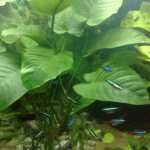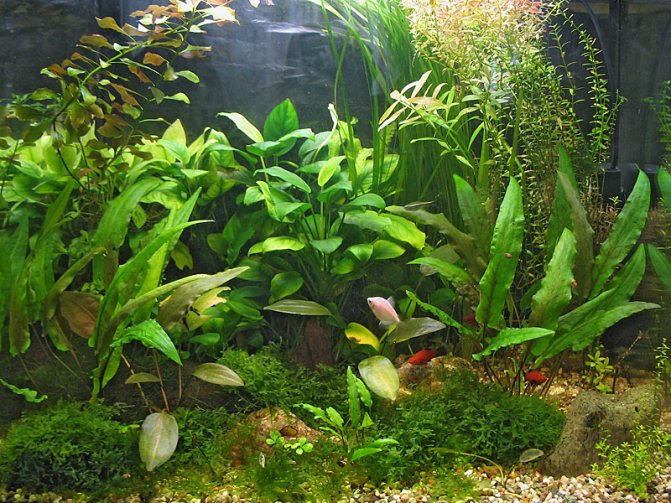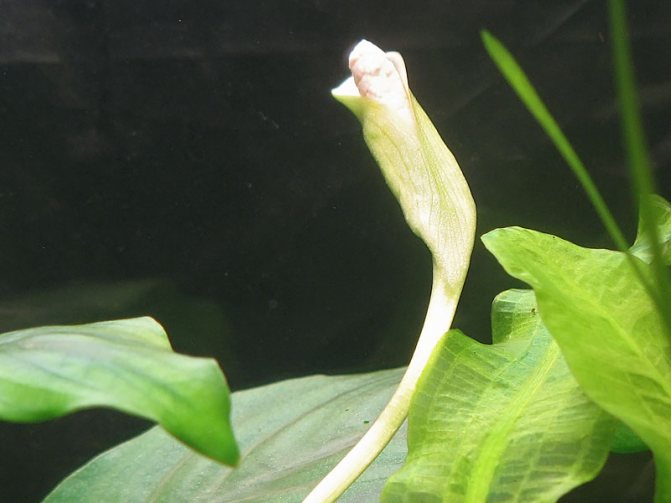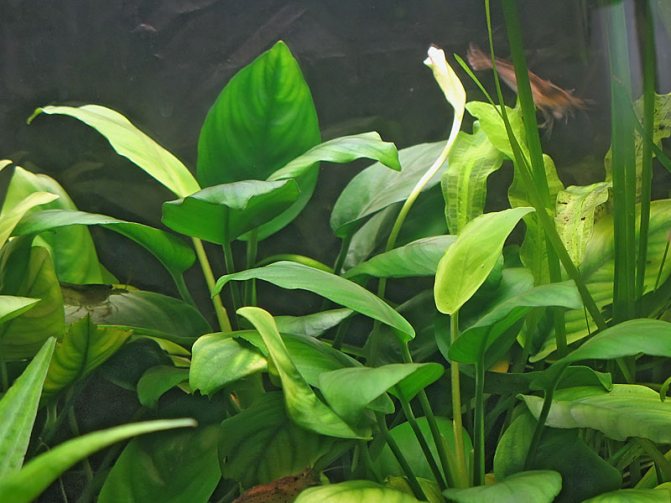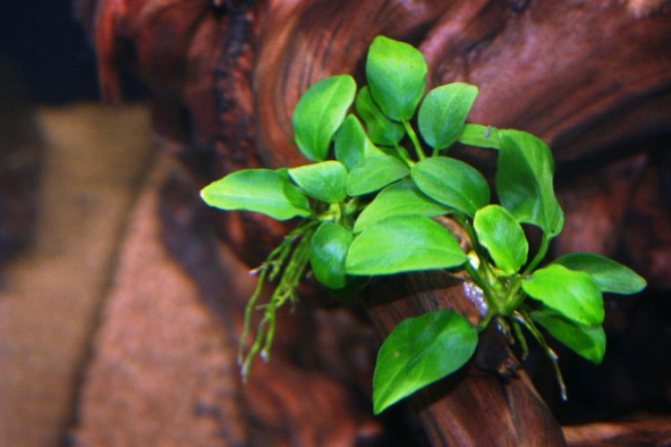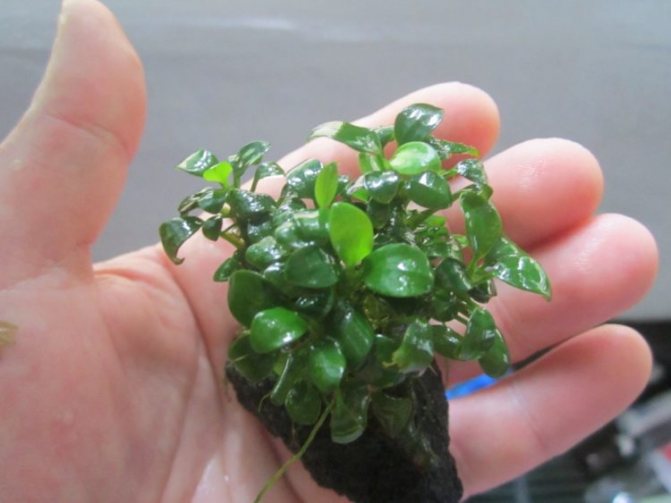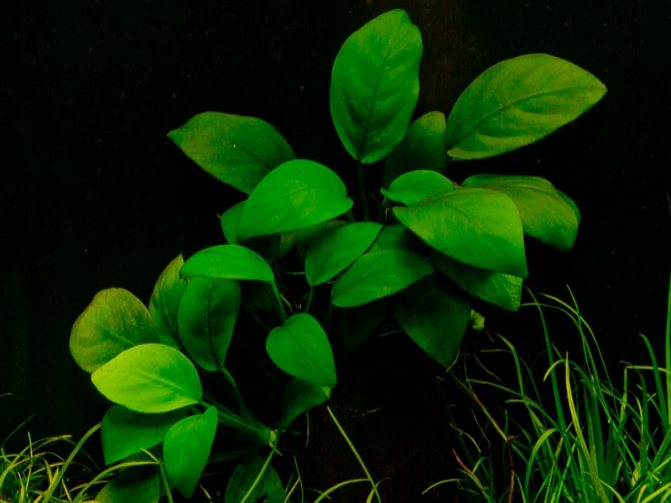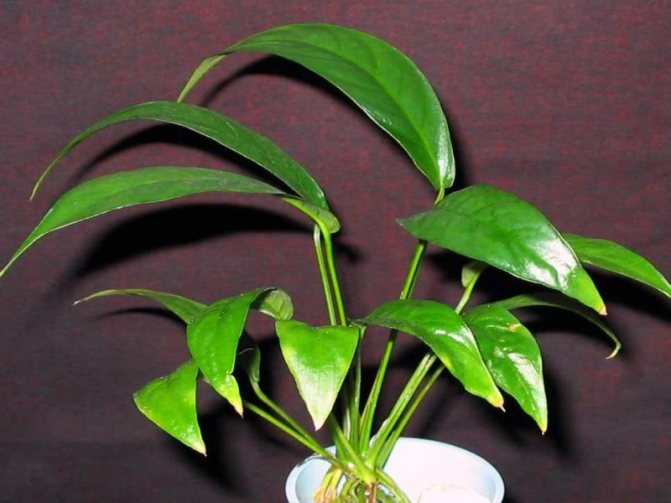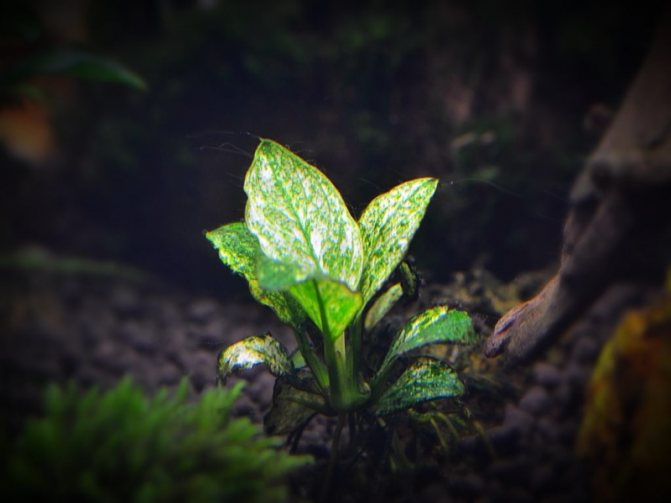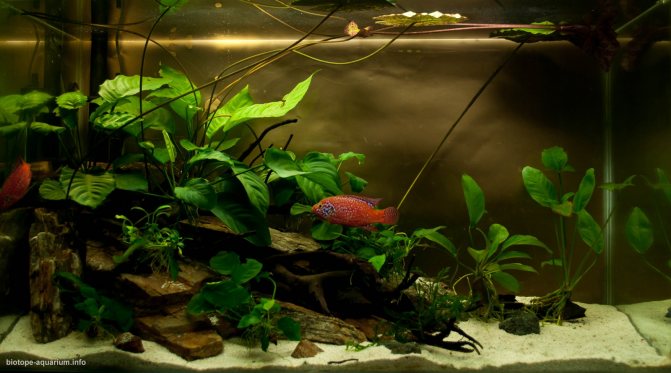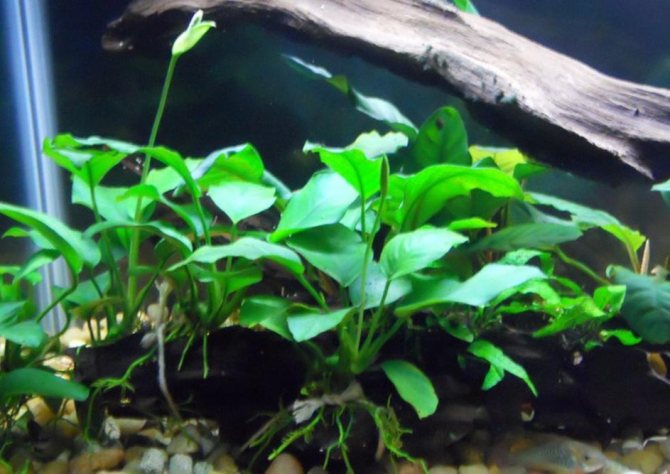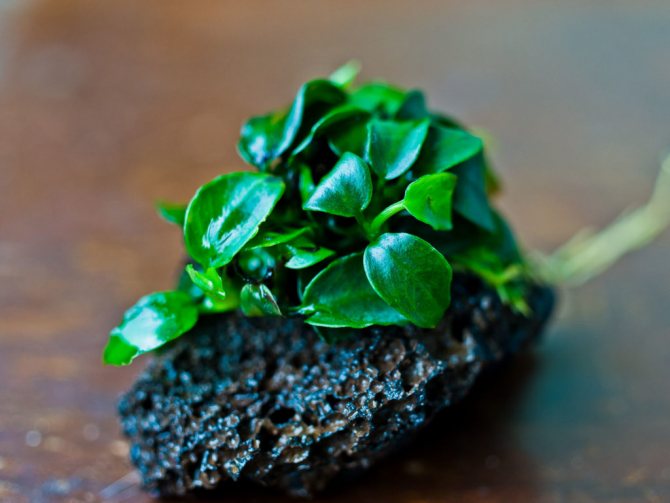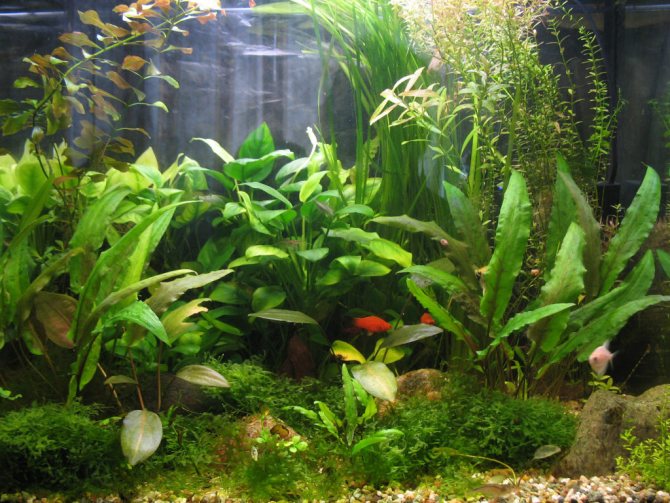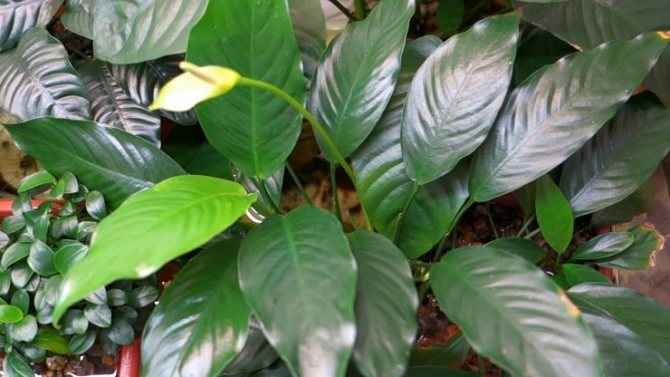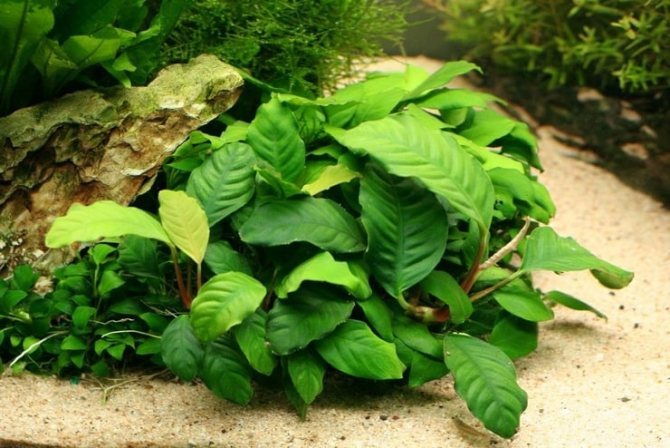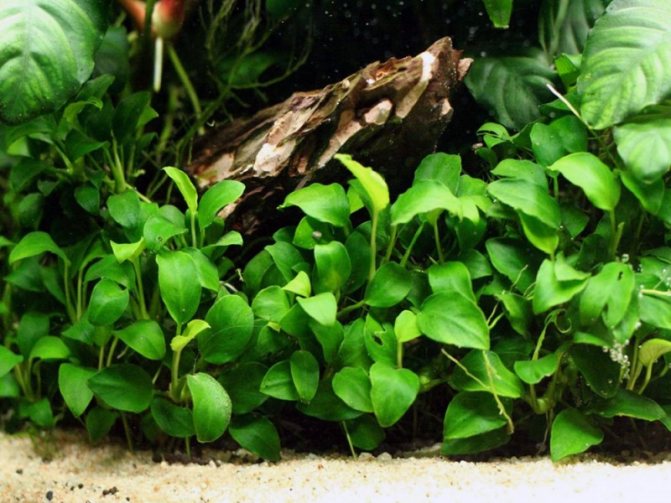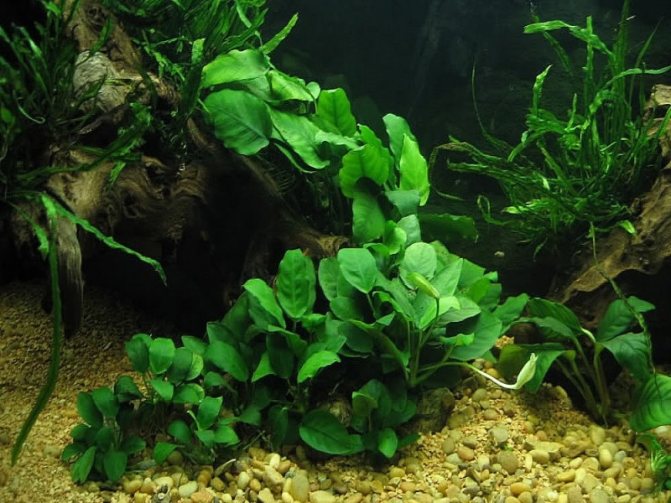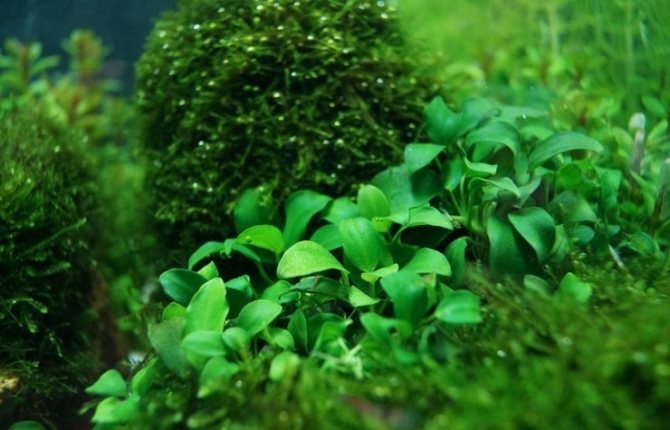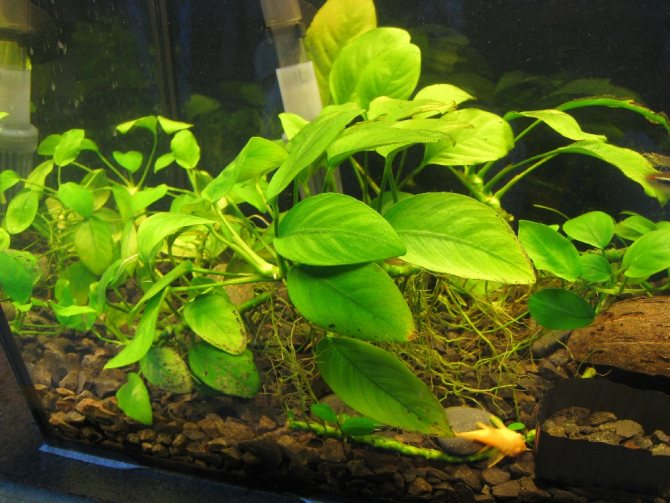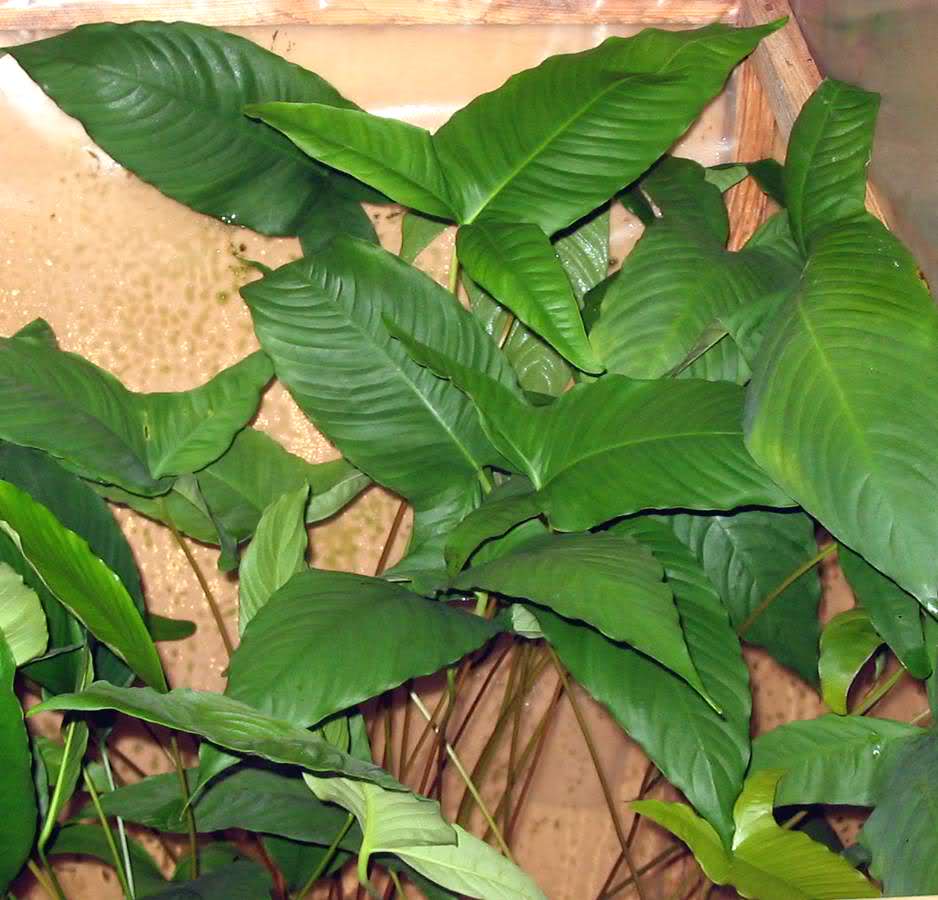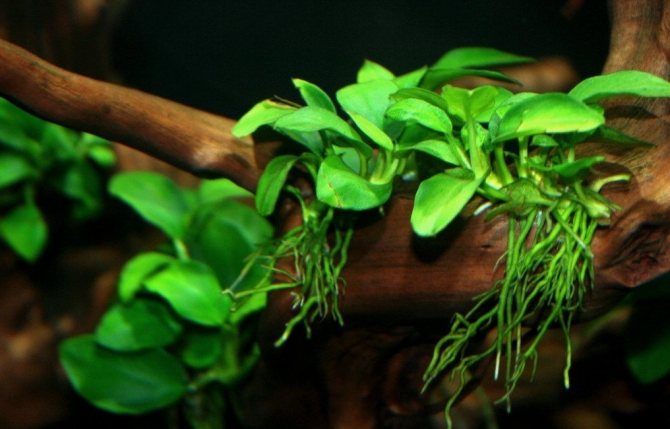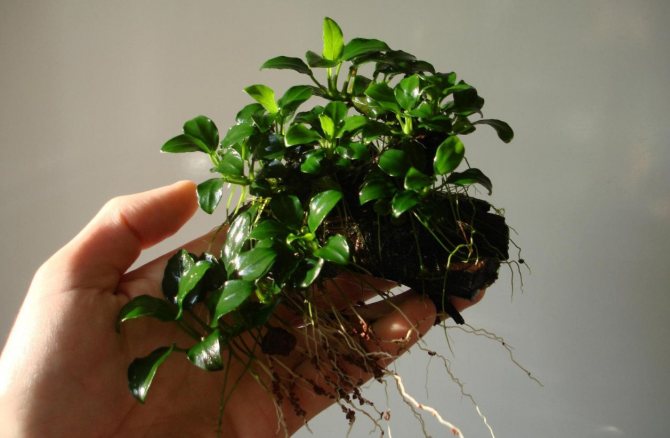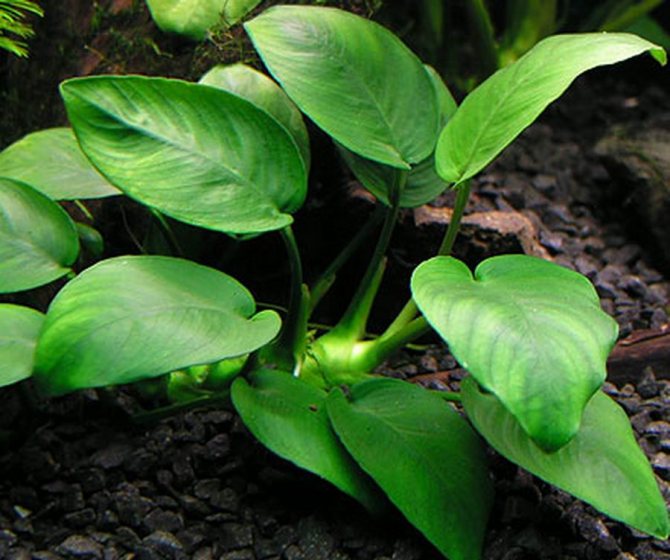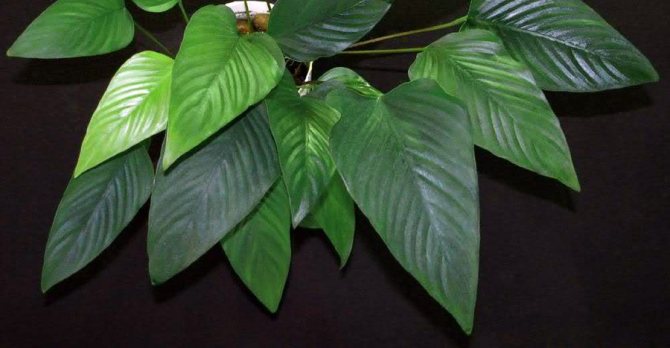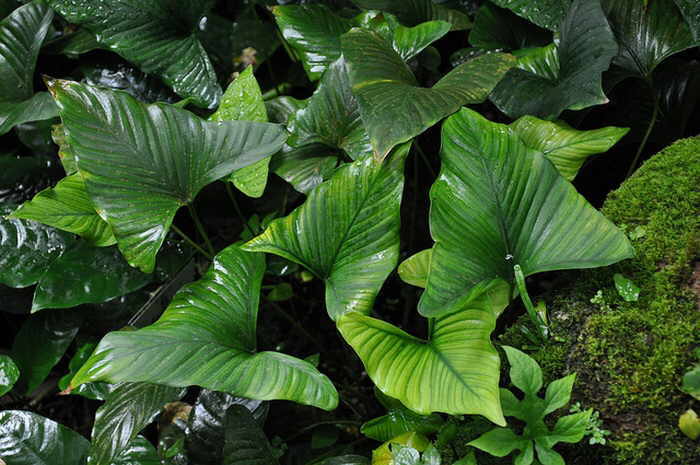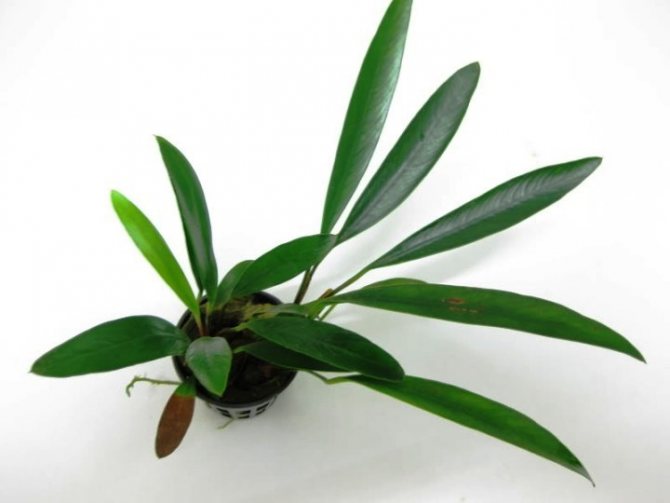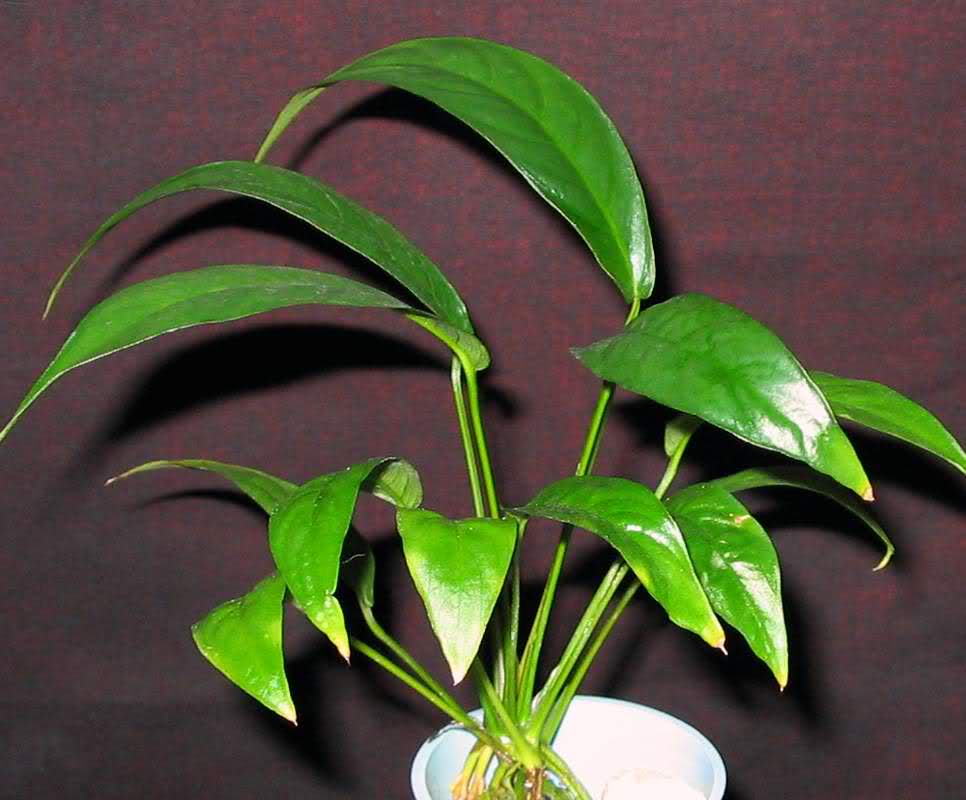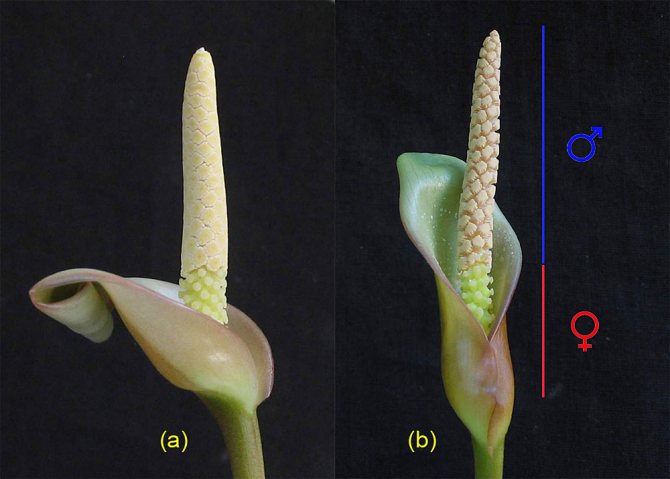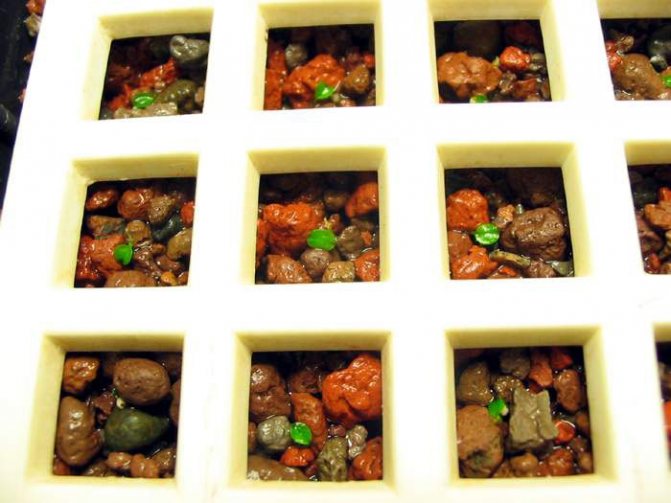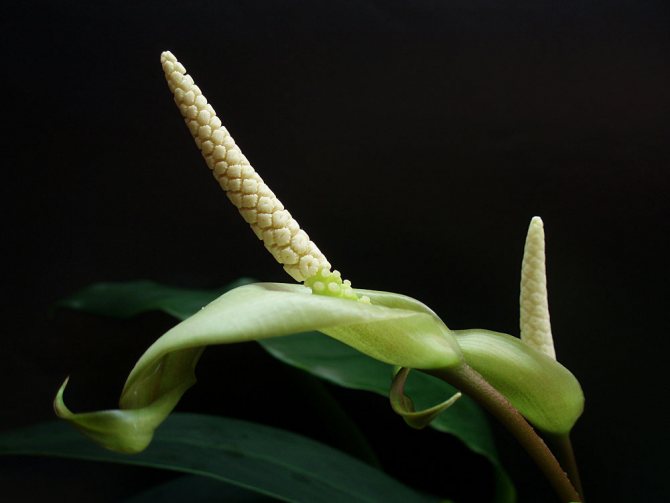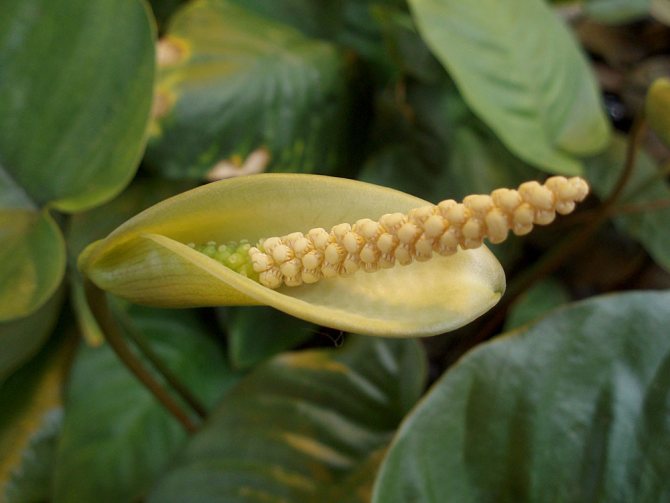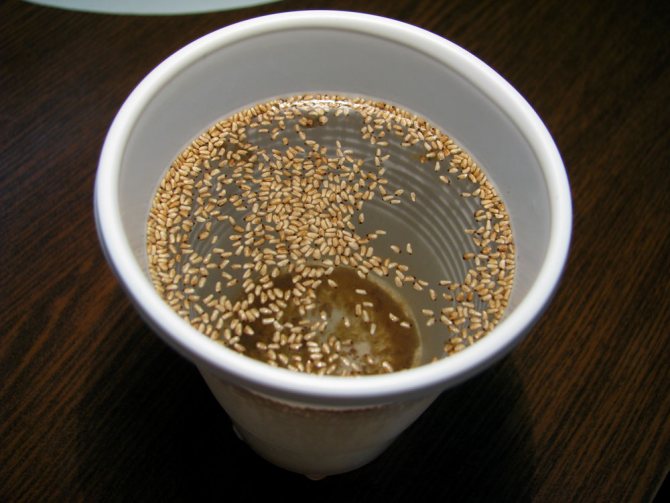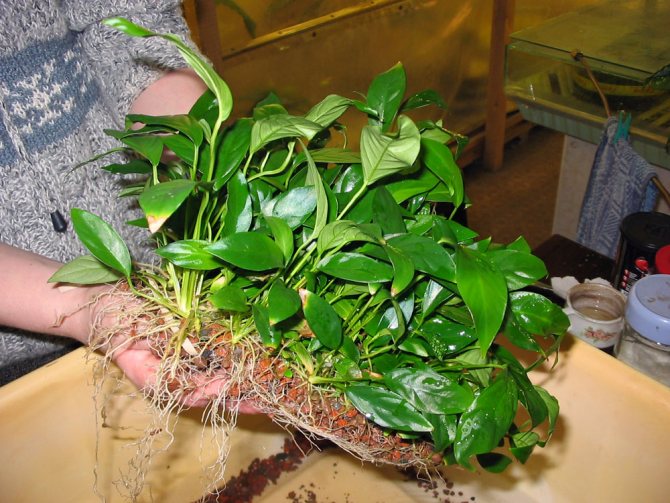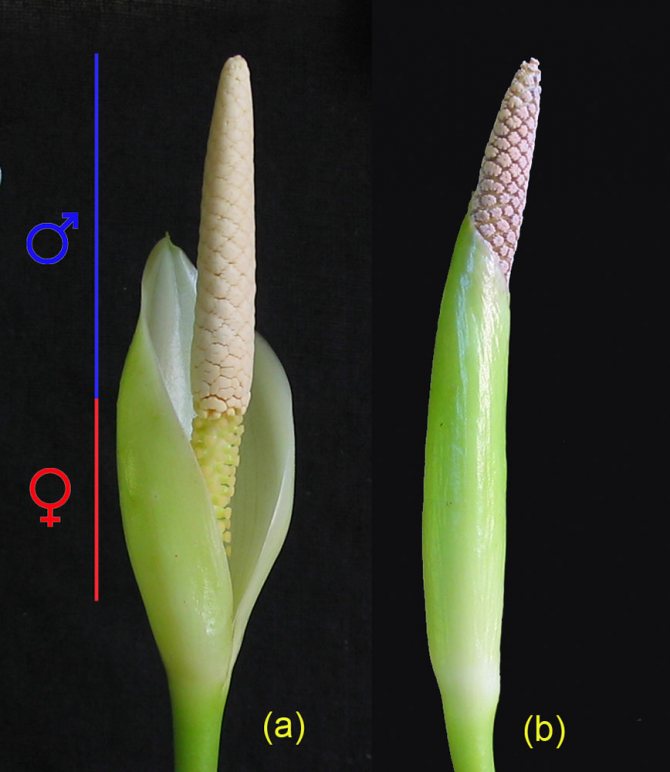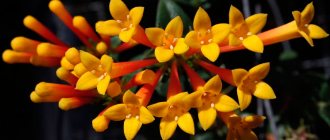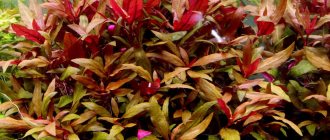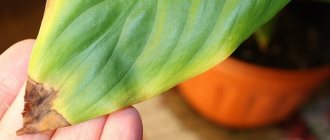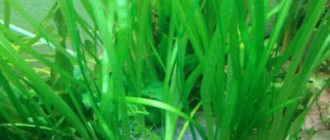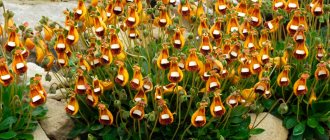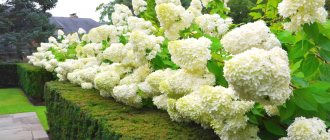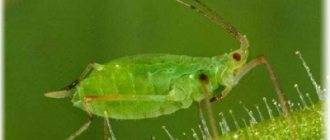Anubias nana is an aquarium plant that able to exist without water... Ideal for aquarists just starting to explore the underwater world behind glass. Anubias nana can often be found in home aquariums due to its unpretentious nature and interesting decorative properties. It has a second name "Dwarf" due to its small size and slow growth even under favorable conditions.
Anubias nana of the petit type and anubias barter are also distinguished.
View, distribution
All anubiasa aquarium plants, the description of which will be presented to your attention in the article, belong to evergreen creeping grasses, have a shortened stem, dense rhizome and several petiolate leaves. Prefer a humid environment.
Habitat - rocky river banks, where the plant is partially submerged in water. In the rainy season, the rivers rise, as a result of which the Anubias is entirely under water, but this does not harm him. Anubias is able to spend his entire life in water, but in such conditions he cannot grow to large sizes.
Also, representatives of this genus can be seen in swampy areas and tropical forests. Thanks to the strong rhizome, these plants receive all nutrients from the soil, and the necessary oxygen is obtained through photosynthesis from the air. In an artificial environment, they are very popular with aquarists, grow well in paludariums and humid greenhouses.
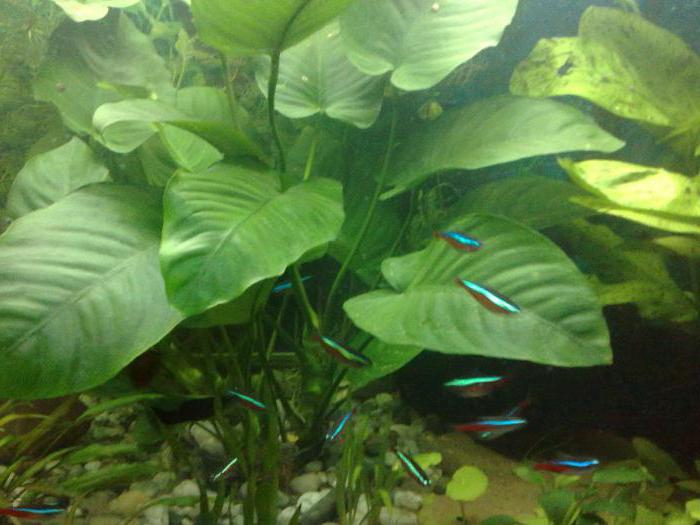
Description
As an aquarium plant, Anubias remains quite exotic. At the same time, despite a number of difficulties in growing, it is excellent for a tropical aquarium. Large forms with dark green leaves can be an excellent backdrop for more delicate plants. The dwarf form is a good decoration for the bottom of any aquarium. The submerged plant grows slowly, without disrupting the overall design of the aquarium interior and without requiring serious surgical interventions.
Anubias bloom in an aquarium is quite rare. Under natural conditions, it occurs during the period of terrestrial growth, when the active growth of the plant begins. Anubias grows much better and blooms regularly in a humid greenhouse or paludarium. Nondescript inflorescence - the ear is protected by a thin wrapper leaf. A characteristic feature of all representatives of the genus are thick rhizomes, sometimes reaching 1.5 cm in thickness. The rhizome branches easily, growing in the surface layer of the soil; numerous roots that hold the plant extend from it.
The leaves are dense, with constant flooding, they grow very slowly, therefore, they are often covered with a bloom of algae. The shape of the leaves is from ovoid to lanceolate. A longitudinal protruding vein is clearly visible on the lower surface of the leaf. Having dense covers, the leaves of anubias successfully resist mollusks and herbivorous fish. Even catfish cannot dig up an overgrown rhizome.
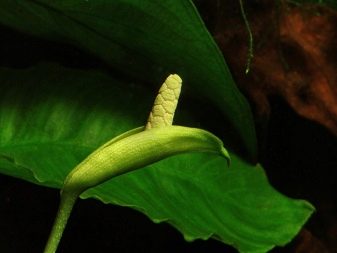

However, the plant may suffer from turbidity settling on the leaves. To avoid this, a reliable filtration system must be set up in the aquarium.
Structure
Plants of this genus have a very varied appearance.Some cover the bottom of the aquarium or driftwood with a hard green carpet. Others grow like shrubs or bonsai trees. Height varies from 7 to 65 cm.
All representatives are characterized by a creeping, branchy, powerful root system, immersed in the ground for no more than a few centimeters. The stem only grows to a certain height. Several dense leaves on thin stems extend from it. The distances between the nodes are small, the petioles are smooth, in some they are spiny.
The leaves are green, reaching a length of 3 to 38 centimeters. They are unlike algae leaves, tough, leathery and smooth. The main and primary lateral veins are clearly visible. The leaf blades are varied in shape: oval, lanceolate, triangular, semi-sagittate, ear-shaped.
The inflorescences are outwardly similar to calla flowers - a light petal tapering at the base and an ear inside it. As a result of flowering, fruits ripen - polyspermous berries of a flattened-spherical or obovate shape.


About the plant and its features
Anubias is a creeping, evergreen plant native to Africa. The stems and root system are under water, and the leaf plates are located above its surface. The plant has few leaves of a triangular, oval, heart-shaped, lanceolate shape.
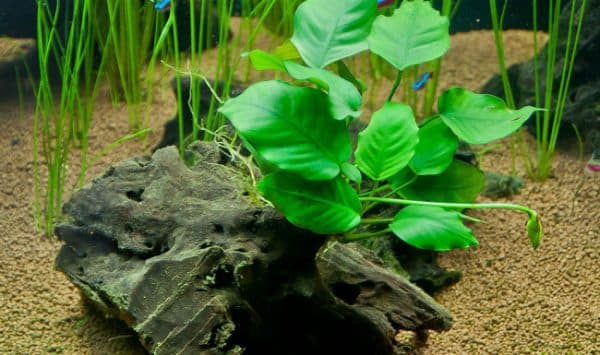

The leaf plates are distinguished by their smoothness, glossy shine, and the presence of pronounced veins. The inflorescences close immediately after flowering and are greenish or creamy in color. Under favorable conditions, anubias bloom once a month. The appearance of flowers is spectacular and exotic, it can have a flattened shape, characteristic of male specimens, or rounded - inherent in women.
Anubias are suitable for growing in greenhouses, paludariums. May also be kept in aquariums, subject to certain conditions. The variety of sizes, shapes, unique external qualities of this culture fell in love with aquarists, because using anubias, you can create a truly unique, original design.
Growing in an artificial environment
Representatives of the Arroid family are unassuming, can easily take root in almost any aquarium with a warm climate, and have a presentable appearance. They easily tolerate changes in lighting and even the absence of moisture. They enjoy significant success in the decoration of aquariums.
Since anubias grows slowly, when composing a certain composition, you do not have to think about a transplant for a long time. The leaves of the plant will turn towards the light, which must be taken into account when planning the landscape. Anubias is often used to decorate the back and side walls of the aquarium.
Small-sized species spread in a dense green blanket at the bottom, twine around stones and driftwood. To decorate the central object, it is better to choose representatives of a large size. A plant submerged in water is unlikely to exceed 35 centimeters, but there is a way to visually increase its size. The leaves are partially located above the surface of the water, and the plant takes its usual position.


Reproduction
As mentioned above, propagation of this species by seeds is in principle possible, but extremely difficult, therefore, vegetative propagation is usually used. In the process of growth, the plant regularly throws out lateral roots, on which buds are formed over time, and then bushy shoots - they can be used for reproduction.
To do this, they are waiting for such a bush to form its own root system, after which it is separated from the mother bush and planted in a new place.
Did you know? In aquariums, not only can fish be predators - aquarium plants can also be carnivores. For example, vesicular aldrovanda (Aldrovanda vesiculosa) or pemphigus (Utricularia) are quite capable of capturing and destroying small fish or fry.Aquarists even feed
their bloodworms so that the fish do not suffer. As a rule, all carnivorous plants do not have roots and float on the surface - in nature they lived in a nutrient-poor environment and thus evolved to predation.
As you can see, it is not for nothing that anubias nana has gained wide popularity among aquarists. It is an attractive yet unpretentious plant that can be used to create a beautiful aquarium landscape. The factors that complicate its maintenance are single and easily removable, so even novice aquarists can easily decorate their underwater landscape with Anubias.
Anubias aquarium plant: reproduction and growth
Anubias grows for a very long time, especially at low temperatures. The largest representatives are found in paludariums, but their growth is limited in water. This family belongs to the flowering department, but it can also reproduce vegetatively. It depends on the location of the plant.
Greenhouse Anubias reproduce by seeds. Flowering occurs in spring. On each separate branch, 1-3 inflorescences are formed. Each pedicel is surrounded by a veil that tapers at the base. There are male and female flowers on the cob. Male - from above, female - from below, bisexual are possible on the periphery. After fertilization, small berries are formed, which contain seeds.
Aquarium species completely submerged in water most often do not produce flowers, and if this happens, they rot. How to breed aquarium plants (anubias)? For their reproduction, a vegetative method is used. Part of the rhizome and 5-6 leaves are separated from the main plant, the long lateral roots are slightly shortened and sprinkled with a small layer of soil. The main root must be left on the surface, otherwise it may rot. You need to slightly press down the plant with a stone or tie it, as it can float to the surface. If after transplanting the plant has lost its leaves, you should not get rid of it. Wait a few days - maybe it will release new ones.
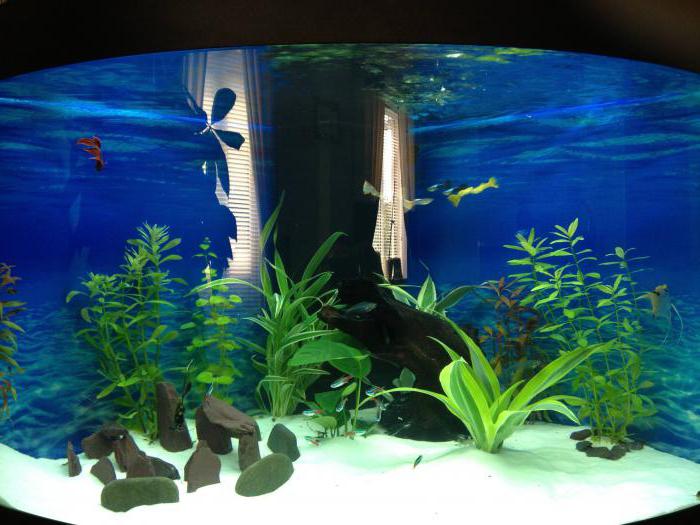

Advantages and disadvantages
There is an amateur for every aquarium plant. To the merits this type includes the following indicators:
- Resistant to changes in water quality.
- Unpretentiousness to the amount of light rays.
- Decorative properties.
- Vegetative reproduction.
- Small size: no need to prune bushes.
To the disadvantages anubiasa nana include:
- Demanding tropical climate.
- Slow growth in the absence of soft water.
- Lack of blooming in the aquarium environment.
- The need for nutrient soil.
The advantages and disadvantages of this species are always different for each aquarist. For some aquarium owners, disadvantages can easily turn into advantages. In any case, this plant has excellent decorative properties and will fit into any aquarium interior. Bright green foliage will add color and mood to your aquarium. It is difficult to find an aquarium species with a more unpretentious character, and if you need a green space that will delight the eye all year round - Anubias nana is for you.
Anubias aquarium plant: content, possible problems, care
In order for the selected plant to please you with its beauty and bright color, not to decay or deplete, it is necessary to observe certain conditions of detention. Anubiasa aquarium plants generally do not require special attention to themselves, but water, soil composition and lighting must be controlled.
The water should be warm (in the range of + 26 ... + 28 ° C) and clean. The fluid is replaced weekly, at least 1/2 of the volume, since this species does not tolerate siltation. Acceptable water hardness is from 2 to 15 ° dGH, acidity is from 6 to 7.5 pH. Additional aeration is optional.
The soil needs to be saturated, with an additional peat component, the presence of stones and sand is possible. Due to the shallow attachment to the ground, when planting a new appendix, you can put a sandy base, so it will grow more likely.
In terms of sanctification, the main thing is not to overdo it. Specimens of this genus prefer shady parts of the aquarium. Small plants can be planted under other, larger ones, as strong light damages the leaves. Plants need at least 12 hours of dim light per day; direct sunlight should be avoided.
If all the rules are not followed, the plant turns pale, algae develop on it, which spoils its appearance.
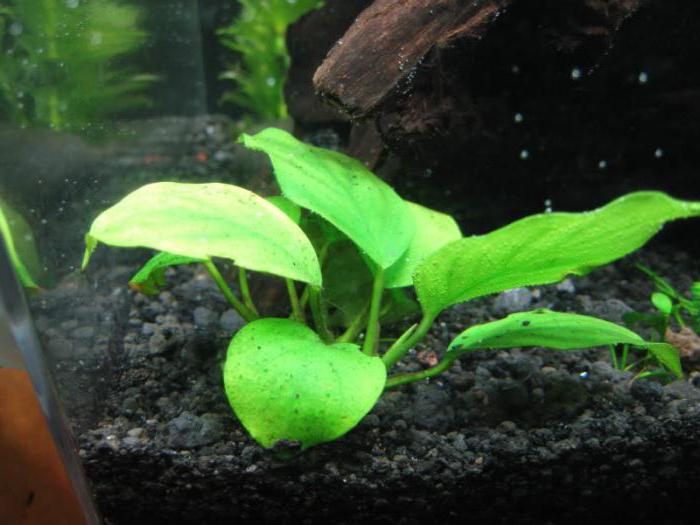

Selection recommendations
When purchasing anubias for planting, it is important to pay attention to the condition of their leaf plates. The leaves should be fresh, tough, dense, well-fitting to each other. It is worth considering the appearance of the rhizome. It is necessary that it does not decay and be sufficiently developed, without putrefactive signs.
A number of characteristic diseases, the development of rotting, is also indicated by a specific, unpleasant odor emanating from the plant.
It is immediately recommended to abandon the purchase of anubias standing in trays of cold water with yellow leaves.
Anubias are attractive amphibian aquarium plants that differ in color and size. A wide variety of species allows every aquarist to choose the option that suits them best. This plant, with an attractive appearance, is not too whimsical in terms of requirements for conditions of detention and is resistant to unfavorable external factors.
Fish Compatibility
Due to its hardiness, the anubias aquarium plant can live in almost any aquarium and coexist with many species of fish. He is safe even with herbivorous fish. Strong leaves are unsuitable for food. Aquarium inhabitants scurrying around the rhizome are also excellent neighbors for him, but here the same danger arises as when an aquarium is overpopulated - mechanical suspension.
He will get along well with live-bearers, goldfish and shell catfish. But in this case, it is very important to monitor the water filtration, to carry out a weekly replacement.
Anubias feels good in the "company" with discus. The density and strength of the leaf blades can easily support the weight of the snails. Shade-loving fish such as catfish will appreciate it.


Conditions of detention
Anubias need an increased amount of organic, mineral substances, so it is important to take care of a nutritious soil for the plant. For these purposes, you can use specialized feeding and fertilizers.
An important condition for the normal state and development of Anubias is to provide them with clean water. Before planting, you must purchase a filter, regularly change the water. Otherwise, the plant is affected by parasitic algae, its leaf plates begin to collapse at an accelerated rate.
The plant is resistant to temperature extremes, but the optimum temperature is around + 25-28 ° C.
In colder water, Anubias will not die, but its growth will be significantly slowed down. A prerequisite is also a sufficiently high humidity.
Care should also be taken that the temperature regime does not rise too much. Otherwise, the development of putrefactive processes and even the death of the plant is likely. As for the water parameters, this aquarium culture is absolutely not picky about them. Anubias feel best in a mild, moderately acidic environment, but tolerates changes in water quality very well.
Anubias belong to the category of shade-loving plants. Too bright, intense lighting can provoke the development of parasitic diseases or cause burn injuries to the leaf plates. Therefore, the backlight should be soft, diffused. Planting anubias is best in the shade of larger aquatic plants.The recommended daylight hours are 10-11 hours.


Under favorable conditions, anubias can bloom even in an aquarium, and even more so in a greenhouse. The plant propagates by dividing the root system. The lateral processes are neatly separated from the parent specimen when their own roots and several leaf plates appear.
Growth buds are formed on the rhizome of the plant with sufficient soil nutrition, therefore, it is recommended that owners of anubias periodically use mineral dressings. Different varieties of this aquarium culture may have specific requirements for the content.
Read also: How to keep flowers on the balcony in winter
Anubias Barter
Anubias Bartera is an unpretentious durable plant. Its height reaches 50 centimeters, the roots are branched, they go shallowly into the ground. Each internode has several leaves. They are heart-shaped, in places covered with light specks. In length, the leaves reach 10 centimeters, in width - no more than 5 centimeters. It is one of the best representatives of the aquarium fauna, it is widely used in decoration both singly and when planted with small bushes.
Good growth requires clean water, rich, "greasy" soil and moderate lighting. Often, birch charcoal is added to the soil, which creates a more nutritious environment for this plant. Anubis Barter's aquarium plant can be fed. Several daughter plants grow on the rhizome, which can be used for reproduction.
How to plant
In principle, any soil is suitable for this plant, but a silted substrate with particles of 4–5 mm in size is optimal. For planting, it is enough to put a bush on the bottom, put the main root on the surface of the bottom and sprinkle the shoots of this root with soil.
Anubias nana is often rooted on snags and large porous stones. To do this, the root of the plant is carefully tied with a fishing line to a snag or stone, or fixed with another stone. After 3-4 weeks, the processes of the main root will reliably hook onto the surface.
Important! If, when planting anubias nana, you dig in the main root, over time
it can rot. Sometimes a growing point dies off in a transplanted plant, but over time, a new one usually forms.
Anubias Nana
Anubias Nana - the smallest representative of its kind, is a subspecies of Anubias Barter. It occurs naturally on rocks and rocky surfaces along river banks. Partly or completely submerged in water and therefore ideal for keeping in aquariums.
The aquarium plant Anubis Nana has a shortened stem with leaves branched in different directions. The distance between the nodes is small, the leaves are small, oval, rounded at the base and elongated at the end, the rhizome is highly branched. The size of the plant does not exceed 8-10 centimeters, most often it is used in decoration to cover the bottom. If you plant multiple shoots at once, you will soon have a dense green carpet in your tank.
Good growth requires nutrient-rich soil, moderate lighting, and clean water. The plant should be protected from direct sunlight, otherwise it will become covered with algae and take on an unsightly appearance. Too high a water temperature is also detrimental to him.
Anubias Nana can be propagated by shoots that form on the rhizome.
How it blooms
Anubias nana bloom is not easy to achieve. Most often this happens spontaneously, for reasons incomprehensible even for experienced aquarium owners: in some it blooms regularly, in others it does not bloom at all, despite the varying conditions of keeping.
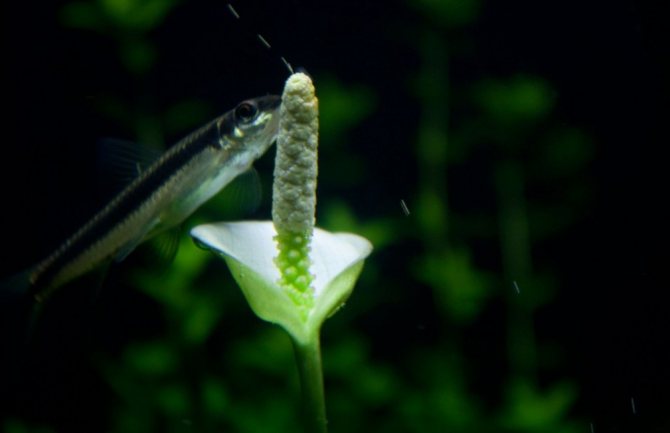

During the flowering period, which usually begins in the spring, the plant throws up a white flower, similar to an ear, wrapped in a green (later brightening) sheet-blanket.The flower, which is 4–6 cm long, can reach the surface or remain in the water column if the aquarium is too deep.
Important! Pollination of Anubias nana flowers is possible only in the air. In addition, pollination requires the presence of several flowering plants and they will have to be pollinated manually - self-pollination is impossible. So getting seeds is a very difficult task that only specialists can do.
Anubias Afzeli
Anubias Afzeli is also a fairly common species. In an aquarium it reaches 50 centimeters in height. It has a short stem base, from which large leaves with a long handle grow. The leaves are green, narrowed at the base and rounded at the end. In an aquarium, it is most often placed in the background. The root system consists of thick, cord-like branches, so the density of the soil does not really matter.
For good plant growth, it is important to monitor the temperature and purity of the water. The temperature should not drop below 24 degrees, otherwise you will not see growth. The soil must be chosen nutritious; when planting, it is recommended to add nutrients, clay, peat under the roots. The depth of the soil should be at least 10-15 centimeters. The lighting is moderate, both artificial and natural can be used.
The easiest way to propagate Anubias Afzeli is by daughter, lateral processes.
Role in aquarium decoration
This species is placed in the foreground of the aquarium to create a green lawn of dense and dense bushes. It can decorate both the bottom of the aquarium and the surface of the reservoir. Due to its slow growth, it is able to maintain the created landscape and interior for a long time. If you alternate anubias nana with tall plants (for example, anubias barter), you can create the impression of a forest or a valley. This look is perfect for people with good imagination and design qualities.


Contents in the aquarium
Priming... It is recommended to use a silted substrate with large particles (up to 4 mm), since the root system is not buried in the ground, but is located on the surface. This root system is called creeping. Rocky soil, pebbles or coarse sand are ideal for filling.
Nutrient soil... It is sensitive to additional micronutrients, as it receives most of the nutrients through the root system. You can do without nutrient soil only if fish are kept in the aquarium at the same time. The products of their vital activity and the remains of food that settle to the bottom can serve as an excellent feeding for Anubias nan.
Water parameters... Anubias is recommended to be placed in tropical aquariums with a water temperature of 24-25 degrees Celsius. There is no specific parameter for water hardness: the softer the water, the better for the plant. The acidity of the water should be optimal for the entire aquarium and not exceed 7 pH. It is necessary to keep the aquarium clean, replace a fifth of the water from the total volume of the aquarium every week.
Aquarium dimensions... The size of the tank is selected depending on the number of bushes that need to be placed. It is recommended to select a tank with low walls (35 to 45 cm) so that enough light can penetrate the bottom of the aquarium through the water column. This is necessary if the aquarist wants to grow a bushy and vibrant plant or to complement the green space with anubias barter.
Lighting... Not whimsical to lighting. Diffused sunlight or artificial lighting with a fluorescent lamp with a power of up to 0.5 W / l is sufficient. It is worth noting that too bright lighting can harm the leaves and the plant can become covered with harmful parasitic algae that can destroy even the most hardy species. If the plant floats on the surface of the water, you should be very careful about choosing an artificial lighting lamp, as there is a risk of getting burned on the foliage. The aquarium should be illuminated for at least 10 hours.If there is too much light, it is recommended to place the bushes in the shade of another large plant, for example, elodea.
Aeration and filtration... Filtration is a prerequisite for the active growth and healthy existence of this species in the aquarium. Cloudy water with waste particles will prevent light rays from reaching the foliage and the plant will not grow as actively. Dirty water contributes to the formation of pathogenic plaque on the stems, which can destroy even the most persistent species.
Landing... The roots are not buried in the soil, but are located on top of a stony, slightly silted substrate. It is enough to place the plant bush on the bottom and dig the ends of the roots into the ground in order to fix the bush in one place. The main thing is not to bury the whole rhizome, so the plant may die.
Height... This species rarely grows more than 15 cm. For the active growth of a young plant, it is necessary to maintain a temperature balance, maintaining a tropical climate in the aquarium. It is worth recalling that the plant loves very soft water from 1 degree. If these conditions are adhered to, anubias will grow in width and height.
Reproduction... Reproduction occurs vegetatively through the division of the creeping rhizome. It is worth recalling that the plant must be ready for reproduction: small buds must sprout on individual roots, which eventually form a bushy shoot. When the ripe shoot acquires its own root system, the daughter plant can be separated from the mother. In some cases, this process occurs on its own without human intervention. In its natural habitat, Anubias can multiply through seeds after flowering. The seeds fall into the ground and germinate over time, forming a new young plant. Anubias barter reproduces in a similar manner.
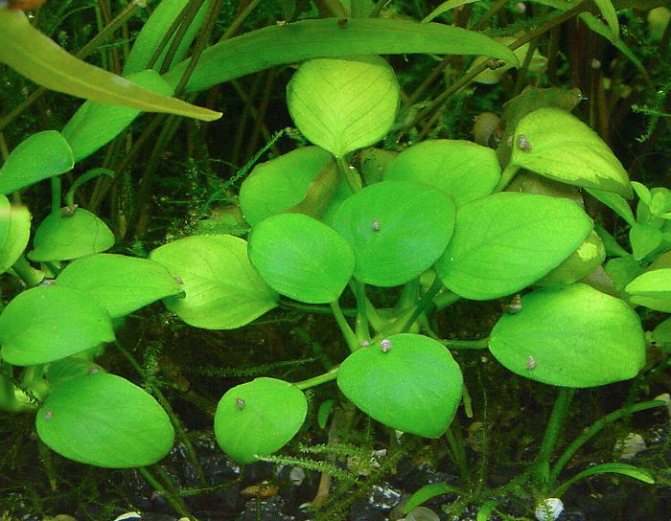

Fertilizers... This species does not need additional fertilization if it shares an aquarium with fish, since waste and fish food serve as an excellent nutrient substrate for anubias nan. If there are no fish in the aquarium, it is recommended to purchase specialized fertilizers: a silted substrate with potassium, phosphorus, boron, calcium and other trace elements. For example fertilizer or "Tetra PlantaPro Macro".
Anubias Congolese
Anubias Congolese is a plant whose bush reaches 25-60 cm in height and 15-25 cm in width. Grows slowly in aquarium conditions, more suitable for wet greenhouses. It is planted most often at the side or rear walls.
The rhizome of the plant is fleshy, thick, creeping, sometimes branched, the adventitious roots are cord-shaped. The petiole is small; ellipsoidal or lanceolate leaves extend from it. At the tip, the leaf is sharp, the base can be both sharp and round, short - in the form of an arrow or a spear, the edges are slightly wavy. The leaf blade is green, leathery, 10 to 38 cm long, 3 to 13 cm wide, with clearly visible main and lateral veins.
For good growth, you need clean water with a temperature of at least 24 degrees. The soil is sandy-clayey, fine gravel can be used. Moderate lighting.
The plant is propagated by parts of the rhizome with leaves.
Anubias video
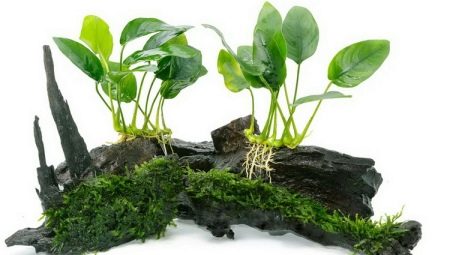

join the discussion
Share with your friends
Anubias is a flowering plant from a small genus of the same name, belonging to the Aroid family. The genus Anubias is distributed over a relatively small area - in West Africa. All species are inhabitants of tropical swamps and are, first of all, semi-aquatic plants. However, due to the peculiarities of the climate of their growing area, they periodically undergo complete flooding, which sometimes can last almost six months. At this time, the plant slows down its growth, and after the onset of the dry period, it continues to grow. This ability made it possible to use Anubias as landscaping for aquariums.However, they still feel more comfortable in a wet terrarium or paludarium (artificial swamp).


Other types of anubias: photo and description
Anubias lanceolate -A. Lanceolata N. E. Brown
Widely distributed in tropical regions of West Africa, often found in the forests of southern Nigeria, Cameroon and Gabon. Usually grows in calmly flowing waters near forest water bodies, in shady and humid places. Most of the year it grows in open or semi-closed ground, can grow for a long time in the water column, but develops very slowly. This is a typical marsh plant with leaves floating or protruding above the surface of the water.
This anubias, unlike other species in nature, reaches 45 cm in height, in aquarium conditions 30 cm. The rhizome is creeping, up to 1.5 cm thick, sometimes branched, and sometimes with tuberous thickenings and traces of fallen leaves; the stem is straight, short.
In young plants, the leaves are collected in a rosette, in adults they are alternate, broadly lanceolate, up to 15 cm long and up to 5 cm wide, rounded at the base, narrowed towards the apex with a blunt end, dark green above, slightly wavy, convex, shiny, green below with matte shade; the main vein is clearly visible; slightly depressed on the upper side, protrudes from the bottom, lateral ones are weakly noticeable, and shadow streaks are formed along their lines. The sheet length to width ratio is typically 2.5: 1. The petioles are up to 15 cm long. The flowers are small, gathered in cobs, which are formed inside a wrapped pale green bedspread.
Anubias dwarf - A. nana Engler
This miniature plant is common in the rainforests of Cameroon. In natural conditions, it barely reaches 15 cm in height, and in aquarium it grows lower. Requires shading and high humidity. The rhizome is creeping, sometimes branched. Leaves are petiolate, simple, up to 8 min and up to 2.5 cm wide, lanceolate, collected in a rosette, dark green. Narrowed at the base and towards the top; the venation is pinnate, the main vein protrudes from the lower side, the lateral veins are hardly noticeable. The flowers are collected in an inflorescence - an ear, the ovary is surrounded by a pale green funnel-shaped blanket.
Anubias narrow-leaved - Anubias lanceolata or Anubias barteri var. Angustifolia
His homeland is West Africa, Nigeria, Cameroon, Gabon. In length reaches 30 cm. The rhizome is creeping, its thickness is 1.5 cm, sometimes branched, sometimes with tuberous thickenings and traces of fallen leaves. The stem is straight and short. In young plants, the leaves are collected in a rosette, in adults, the leaves are alternate, broadly lanceolate, up to 15 cm long and up to 5 cm wide. At the base, the leaves are rounded, narrowed towards the apex, with a blunt end. Above, they are dark green, slightly wavy, convex and shiny, from below with a green or matte shade and with a clearly visible main vein. The ratio of length to width of the leaf is about 2.5: 1, the length of the cuttings is up to 15 cm.
Here you can see photos of Anubias species, the description of which is given above:
The following describes how you can propagate Anubias in aquarium conditions.
Planting and caring for anubias
- Bloom: observed in natural habitat, blooms infrequently in the aquarium.
- Lighting: shadow.
- Water temperature: 25-27 ºC.
- Top dressing: does not need feeding.
- Reproduction: dividing the rhizome.
- Diseases: growth point rot due to maintenance in unfavorable conditions.
- Pests: blue-green algae.
Read more about growing anubias below.
Reproduction and cultivation methods
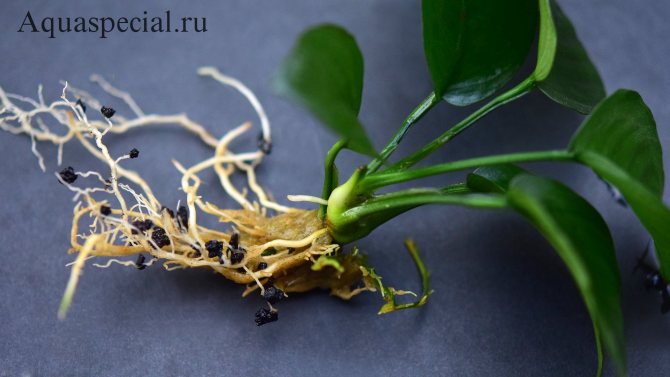

It should be noted that this is a rather laborious and time-consuming process. It is connected, first of all, with the fact that this plant, in principle, grows rather slowly, and the aquarist should be mentally prepared for the fact that the result will not come immediately.
The easiest way is not to focus on growth at all. It is enough to carry out the necessary procedures and be distracted by other plants.Anubias can be propagated in the following way:
- Splitting the root... For this plant, the separation of the rhizome will not be a significant damage. It is enough to tear off one piece and plant it in a good layer of nutritious substrate;
- Cuttings... The easiest and most popular way. To do this, the stem of the bush should be broken. The growth rate of the mother plant and the shoot will decrease significantly, but after a couple of weeks, new cuttings will appear at the site of the break. It is better not to touch them at first. They will feed from the mother bush and later will finally get stronger in order to grow on their own;
- Picking... For this method, you need to select the strongest bushes and purchase seedlings. The roots are firmly and deeply immersed in the substrate to avoid floating up.
The emerging processes can be rooted in two ways. The first one is just to plant the "baby" in the ground, but it should have at least 5 leaves. The second is to take a large leaf and wrap it around a sponge soaked in peat.
Also, the growth rate depends on where and how the Anubias will be planted. Therefore, it is advisable to pick up a fine soil for him. This can be sand, small pebbles, or a mixture of nutrient medium. The main thing is that it is not large, and then the roots will be able to penetrate into the ground without obstacles.
However, soil is not at all required for this type of underwater flora. Its roots are also capable of feeding in water. To do this, anubias can simply be tied to a snag. First you need to prepare it so that it does not float up and does not emit harmful substances. When the driftwood is ready, you can start planting anubias. This can be done with a thread, fishing line (only carefully) or wire (with rubber protection). The plant is carefully wrapped so that it does not emerge after a couple of days.
We recommend reading the article: How to prepare a driftwood for an aquarium?


An example of landing anubias on a snag
It is advisable to choose those areas of driftwood that will be located in the lower water column of the aquarium. As mentioned above, Anubias love shade, and if they are located high and the lighting is bright, the plant will simply die. If the light is diffused and weak, then the place does not matter.
After a certain period of time, the line or wire can be removed. But first, you need to make sure that the bush has taken root well and that they are firmly grasping the branch.
Actually, growing in an aquarium is no different. But this process is much more interesting to carry out in paludarium or a greenhouse, since in nature anubias grow on land, and only their roots are in the water.
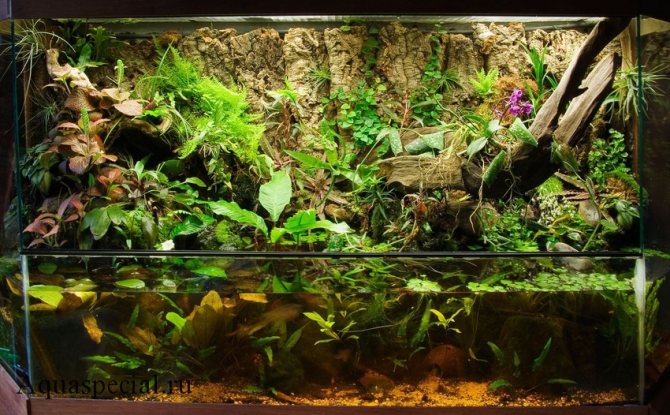

Most species are easy to get used to the air. Therefore, it is enough to choose your favorite and adult bushes, and then transfer them to a paludarium or greenhouse. The main condition for growth is the presence of moisture and a high temperature, 25-30 degrees.
The planting of bushes in the paludarium directly depends on the water level. Therefore, in order for the bush to take root, it is necessary to prepare the place where it will be planted. If the level is high enough, and it will not work to plant the plant at the bottom (so that the leaves are subsequently in the air), then you can use the same stones (pebbles, basalt, quartz) or driftwood (fruit species).
Alternatively, you can use regular indoor flower pots. If you do not want them to be striking, then it is better to impose mosses on them. They will quickly close the pot with themselves. It is important that its edge is flush with the surface. This will allow you to plant the Anubias so that the roots are in the water and the leaves are on dry land.
For paludarium soil, small pebbles or nutrient mixes are suitable. Alternatively, you can use a thin layer of the ground and cover it with soil on top. The bush itself must be planted so that its roots are directly in the ground. This will ensure good nutrition and high humidity (in the greenhouse).
Anubias dwarf
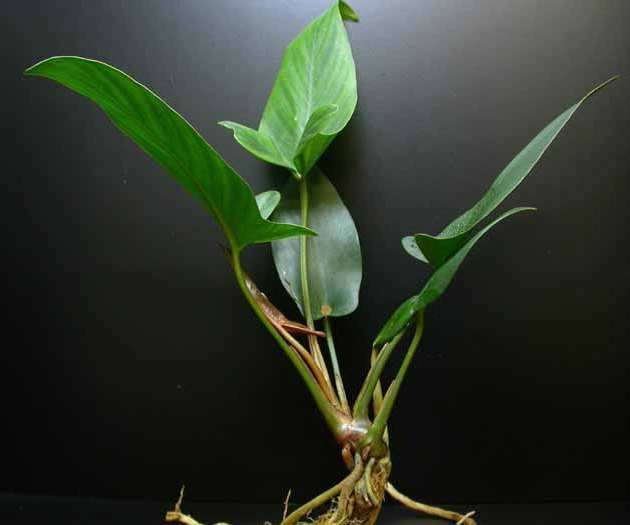

Anubias pynaertii photo can be enlarged
Dwarf Anubias is a low, up to 10 cm plant with oval dark green leaves.The rhizome is highly branching, the root system is small and does not penetrate deep into the ground. Found naturally in West Africa.
Like the rest of the Anubias genus, the dwarf Anubias can be cultivated both in an aquarium and in a paludarium or a humid greenhouse. Growing in an aquarium requires a soil rich in organic matter. When grown in a greenhouse and paludarium, a soil consisting of humus, peat, turf and sand and a temperature of 26-30 ° C is preferred.
In an aquarium, the plant is insensitive to hardness and pH values and grows equally well both in slightly alkaline hard water and in soft slightly acidic water. When growing dwarf anubias in an aquarium, the optimum temperature is 24-28 ° C. Like all Anubias, dwarf Anubias is sensitive to the purity of water - sedimentation of turbidity on the leaves can disrupt the nutrition of the plant, although it is less sensitive to algae overgrowth of leaves than other members of the genus.
Dwarf Anubias prefers shaded areas, it is one of the most shade-tolerant plants. Daylight hours should last at least 12 hours. The root system develops best in a soil consisting of coarse sand or small pebbles, a bush that has grown in an aquarium rises above the ground and forms a dense plexus of roots. Under artificial conditions, dwarf Anubias is propagated by cutting off the shoots of the rhizome with several young leaves and replanting them to a new place.
Hello! Anubias afzeli belongs to the aroid family and is native to the tropical regions of West Africa. This plant has several forms. We know one of them under the name Anubias lanceolata. Earlier it was called Anubias congensis. In today's article we will analyze all the intricacies of growing this aquarium plant in aquarium conditions.
This type of anubias is quite popular among aquarists all over the world.
It is successfully grown both in aquariums and in a paludarium. However, afzeli grows very slowly under water. In aquarium conditions, anubias afzeli can grow up to 50 centimeters in height, so it is better to plant it in the background of the aquarium. The grass will grow throughout the year and will not require special conditions from the aquarist.
For the successful maintenance and cultivation of this anubias, tropical aquas is suitable, the water temperature in which should be at least 24 degrees. If the water is made colder, then the plant will stop growing altogether. The active reaction of the environment and the hardness of the water in the aquarium does not play any role on the development of the plant. It is very important for Anubias to regularly change the water and keep the tank clean. If there is an excess of organic compounds, then various fouling will appear on the leaves of the plant and algae may appear in the aquarium. In this case, the leaves will quickly disappear and the bush will consist of 2-3 young leaves.
Afzeli is not picky about lighting, but nevertheless he prefers diffused moderate lighting, or it can be shaded by floating plants (azolla, riccia, pistia). The fact is that if there is an excess of lighting in the aquarium, green algae will appear on the leaves of the anubias, and they negatively affect the health of the plant. Use fluorescent bulbs for artificial lighting and dilute ah with incandescent bulbs. The maximum power of an incandescent lamp should be no more than 60 W and its bulb should be matte. Place this lamp just above the plant. Provide 11-12 hours of daylight, which is considered ideal.
In addition, it is desirable that the soil in the aquarium is very nutritious. Thanks to its thick cordlike roots, Anubias has a powerful root system. For this reason, the size of the soil fraction does not play a key role. If you are planting a plant in new soil, take care to add nutritional supplements under the roots in advance.The best option is to take sludge from the old aquas. You can also put clay balls under the roots. The thickness of the soil layer should be solid: from 10 to 15 centimeters.
It is not essential to add mineral supplements to the aquarium water, since other hydrophytes grow in the aquarium, which will not leave nutrients to the anubias. I also do not consider it expedient to start an aquarium for anubias, for these purposes it is better to use a paludarium. Anubias afzeli grows and develops much better in paludariums and greenhouses than in aquarium conditions. At elevated temperatures (about 30 degrees) and silted soil, afceli grows better and more than in an aquarium. In such conditions, the grass has more side shoots, thanks to which it is propagated.
If a shoot separated from the parent plant is added, it must be buried in the ground at the very base of the leaves. If you plant a large plant with a powerful and developed root system in the ground, then deepen only the roots, while the rhizome must be left on the surface.
Anubias
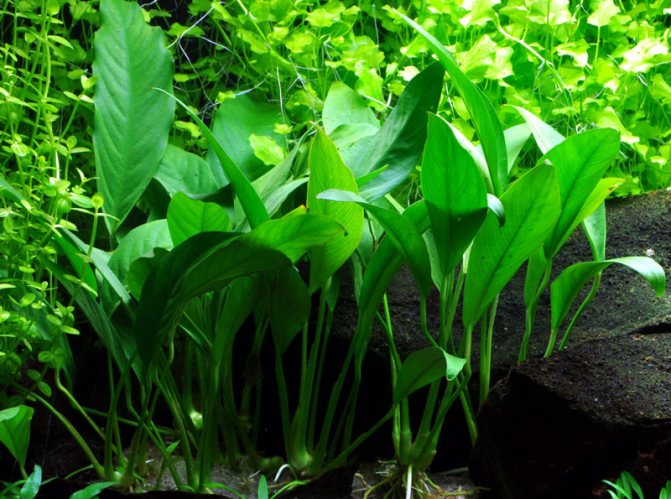

Anubias afzelii photo can be enlarged
Anubias is a small genus of tropical aquatic or marsh plants of the Aroid family. Some species are cultivated as aquarum, however, many Anubias grow better in a humid greenhouse or paludarium.
Anubias grows in tropical rainforests, swamps, and rocky areas along streams and rivers. Representatives of the genus are found in the African tropics: Guiana, Ghana, Cote d'Ivoire, Mali, Liberia, Zaire, Gabon, Angola, Cape Verde, Congo, Sierra Leone, Equatorial Guinea.
In nature, a plant from time to time can be completely in water, but, as a rule, its leaves are located above its level. Therefore, the development of anubias is less active in aquariums, they are significantly inferior in growth to their counterparts, which are located in a paludarium or greenhouse.
The plant has several leaves. Smooth petioles, sometimes with sparse small thorns. Leaf plates of various shapes: oval, lanceolate, elliptical, triangular, semi-sagittal, ear-shaped, semi-heart-shaped. Leaves, as a rule, leathery, smooth, sometimes with protruding primary and middle lateral veins on the underside. The lateral primary veins are pinnate, and the secondary ones are pinnately parallel, while the tertiary veins are perpendicular to them.
When growing anubias in an aquarium, it should be borne in mind that the plant needs an abundant amount of organic matter, so the soil must be nutritious. The water in the aquarium should be warm (from 26 to 28 degrees), as well as clean, which in turn provides for its regular change, at least 1 time per week. Lighting plays an important role in the cultivation of anubias. It should be moderate. With its excess, the leaves of the plant will acquire a blue-green color, which indicates the appearance of algae in the aquarium, and in the future this may cause its death. Anubias is propagated in the aquarium, separating the part with a small amount of leaves from the rhizome.
When growing a plant in a greenhouse, you should also remember about the nutritious soil, high humidity, strong diffused lighting and a temperature of at least 26 degrees. Blooming anubias can only please in a greenhouse or paludarium.
Diseases and pests
With the right content, Anubias does not succumb to diseases and pests, it is an unpretentious and durable plant. But with an unexpected jump in temperature, rotting can begin at the growth point - this is the multiplication of pathogenic bacteria. And at too low temperatures, the growth of the bush completely stops, as well as when the root is damaged. In this case, the leaves also turn yellow and fall.
If gray mold appears on Anubias, it will not be possible to save it and the bush must be disposed of.
How to contain?
The dwarf anubias is one of the most unpretentious amphibian plants and has minimal requirements for keeping conditions.
Temperature
- Optimum temperature: 24-27 ° C.
- However, nana tolerates a decrease to 18 ° and an increase to 35 ° well.
Water
- Requires weekly water changes (25% of the total) and a good filtration system.
- Water hardness can range from 6 ° to 20 ° dGH (but preferably to a lower side).
- Optimum pH: 6-9.
Composition and amount of soil
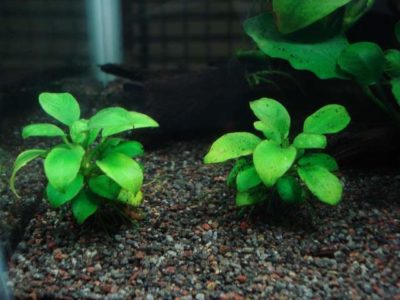

The soil and the thickness of its layer are not of particular importance for the nan. The strong root system of this plant takes root well in any conditions and tolerates mechanical damage well. The following composition is considered ideal:
- pebbles of medium size (5-7 mm);
- peat;
- laterite;
- balls of blue clay.
The optimum thickness of the soil layer for better plant nutrition is 5 cm.


Advice! Young nana with a weak root system are planted for 2-3 weeks in the ground, consisting of a layer of pebbles, a layer of garden soil, and another layer of pebbles on top. This composition accelerates the growth and development of the plant.
Lighting
Dwarf Anubias cannot stand bright direct light. It is advisable to keep it in dim or medium-lit aquariums... As a last resort, you can plant nana in the shade of other plants.
However, the duration of daylight hours should still be at least 10-12 hours.
Top dressing
This plant feels great without feeding. Especially if fish live in the aquarium (organic residues of their vital activity serve as sufficient fertilizer for nana).
If desired you can use such top dressing as "Florastim", "Tetra Planta Min", "Kemira-Lux"... But it is recommended to make them no more than once a month and in a dosage half as much as recommended by the manufacturer. Dwarf Anubias is characterized by slow growth and development; it does not need a lot of fertilizers.
Pruning
Dwarf Anubias is known for its extremely slow growth, so it practically does not need pruning. It is recommended to carry it out when too large leaves appear and growth rates are too slow.
Step-by-step instruction:
- for better and easier work with nana, you should prepare special scissors for aquarium plants (curved shape);
- before pruning, it is recommended to disinfect the tool and make sure it is sharp (pruning should take place without crushing or splitting plant tissues);
- carefully trim the rhizome near the growing point (after the largest leaves), without removing the plant from the ground;
- trimmed roots, leaves and other small debris that often appears in the aquarium after trimming should be removed with a net (smaller particles will be removed by the filter);
- after pruning, the root begins to branch vigorously, the plant becomes more lush and grows noticeably faster.
Important! In no case should you cut off the leaves of the dwarf anubias, as this will lead to decay of the remaining part of the leaf blade.
Transfer
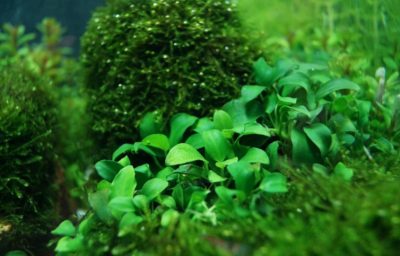

Even an adult dwarf Anubias tolerates a transplant perfectly.
Step-by-step instruction:
- first, you should carefully examine the hydrophyte and assess the condition of its root system;
- then the plant is carefully separated from the substrate (if the nana is firmly rooted, the roots can be carefully trimmed);
- after that, Anubias is planted in a new place (due to slow growth rates, the first leaves will not appear soon, the plant needs some time to adapt).
Water requirements
In their natural environment, Anubias often grow in soft water, but this does not mean that for its cultivation at home, it is necessary to select an aquatic environment of a certain composition. In an apartment, it can grow in ordinary tap water. But if you want anubias to grow well, then you should adjust depending on the season. temperature of the aquatic environment:
- in the warm season, it must be maintained at a level of 22-24 degrees;
- in winter, when Anubias is in the resting phase, it is recommended to lower the temperature to 20-22 degrees. If this is not done, then individual copies may die.
Anubias in the aquarium: content, types, photos
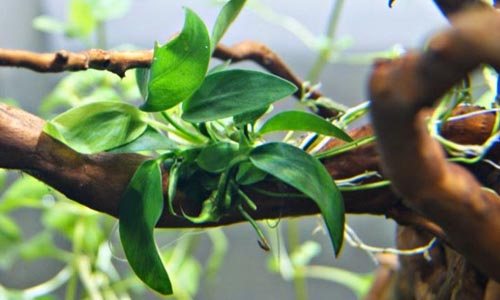

Anubias is an unpretentious plant of the Aroid family, familiar to aquarists. Natural biotope - streams, small rivers, swamps of humid equatorial forests of Africa, where anubias grows in a semi-submerged or underwater state. Paludarium creates comfortable conditions for growing: high humidity, temperature 26-28 ° С, nutritious soil, bright diffused lighting. In the aquarium, the growth rate is reduced, but the anubias retains an attractive appearance. Due to the danger of algae fouling, which is detrimental to anubias, we do not recommend bright lighting in aquariums. The soil is fine gravel, river sand.
Against African ferns, Anubias has developed roots. The plant grows much faster if the light hits the rhizome. Some aquarists claim that plant rhizomes rot in the sand. The zooportal tested the growth of Anubias in sandy soil: the plants slow growth slightly. Dwarf varieties are susceptible to rotting on a silted substrate.
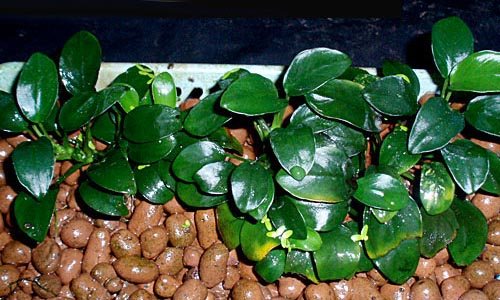

Plecostomus catfish have been seen eating tough Anubias leaves. One representative will eat a dense green lawn in six months. Anubias are not for everyone, although a novice aquarist can keep these plants. If the price does not stop you, take care of the plant: feed it with carbon dioxide, choose the right phytolamps with the right spectrum, regularly feed it with liquid fertilizers ... and your friends will be envious of a real underwater show.
How Anubias blooms
In conditions of complete immersion of anubias under water, the flowering of some plant species is not very common, others can bloom once a month, but this requires the observance of favorable conditions.
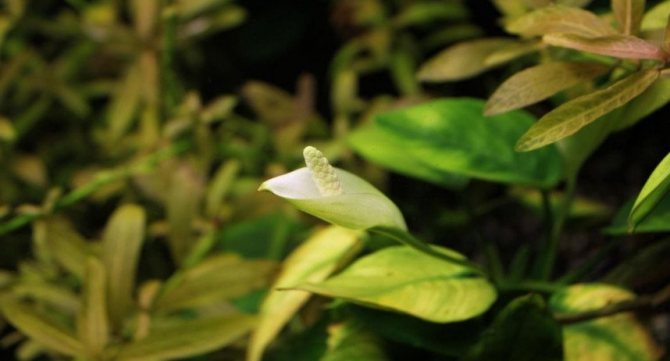

The inflorescence has the so-called veil, which envelops the stamen, and the cob, which is the stamen. Its length can reach 3-4 cm. After waiting for flowering, experts can determine the exact name of the plant, its type, as well as its gender. In "boys" the inflorescence has a slightly flattened shape, while in "girls" it is more rounded.
“The heart of Africa is full of singing and glowing,
And I know that if we see at times
Dreams that we cannot find names,
It is the wind that brings them, Africa is yours! ”
N. Gumilev
Mysterious continent. Its unique nature has attracted the attention of people at all times. For many, this love turned out to be fatal, because in addition to its attractiveness, the Black Continent is fraught with many dangers. As an example, we can recall the Englishman Charles Barter, who, as part of one of the expeditions, went in 1857 to explore the flora of the Niger River. Unfortunately, he was not destined to return from this journey: two years later he died of dysentery. Some time later, another famous European - Austrian Heinrich Schott will name a new species of Anubias in honor of the brave botanist. And at the beginning of the 20th century, Nikolai Gumilyov will devote one of his poems to this African river. Currently, Anubias barteri Schott can be found in almost any freshwater home aquarium, no matter what part of the world it is located in - it can be both harsh Russian Siberia and distant (both from us and from the homeland of the Anubias) America.


The list of aquarium plants with African ancestry is not so long. On the way, I can only remember Bolbitis heudelotii, some types of crinums and some long-stemmed grasses. Against this background, Anubias can be called a kind of pearls of the black continent. It is this waste product of sea molluscs that remind me of the anubias inflorescences.
A small ear in the light reflected from the glossy surface of the bedspread (covering sheet) gives the impression of a burning candle.


At the same time, if we remove unnecessary emotions, it is worth recognizing that in nature there are many plants that are able to leave anubias far behind in the imaginary rating of the beauty of inflorescences.These include both lotuses and representatives of the Orchid family, in the end - an ordinary indoor violet. But how many of them will be able to show their beauty in a completely submerged state? Of course not. In an aquarium, all these plants are doomed to extinction. Anubias bloom under water quite often, and the duration of flowering in the submersed position is longer (sometimes up to a month) than in a room greenhouse (usually 3-5 days).
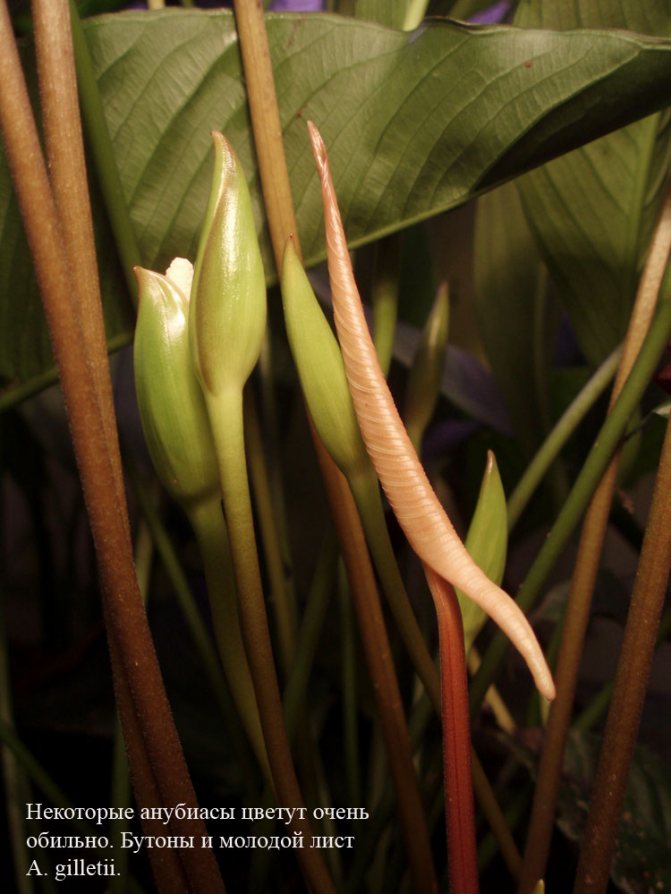

In addition to aesthetic pleasure, Anubias inflorescences can reveal to their owners the fascinating world of entertaining botany. Let's start with the fact that it is the structure of the flower that underlies the taxonomy of higher plants, and Anubias are no exception. Only having achieved flowering, you can reliably establish the species belonging of the purchased bush.
Of course, it is easier to ask the name of the seller, but I have repeatedly been convinced from my own experience that the information obtained in this way is very often far from the truth. Not only sellers of markets or pet shops sin with confusion in the names of anubias, but also catalogs of foreign large firms-importers of aquarium plants. Therefore, in this situation, you can only trust your eyes and scientific works, one of which is the revision of the Anubiasa clan (Wim Crusio, 1979).
Do not be intimidated by such terrible words as "scientific work" or "revision" - in fact, everything is quite simple. Finding out the species of anubias is no more difficult than distinguishing between male and female guppies. The revision includes a key to the definition of views and their detailed descriptions. At the same time, there is a lot of secondary information, which is often more confusing than clarifying the situation. Next, I will try to state my view on this problem and formulate simpler rules for determining the species.
It has already been mentioned that the composition of the anubias inflorescence includes an ear and a bedspread. The ear, in turn, consists of two main zones: the lower one, consisting of female flowers, and the upper one, represented by male flowers. The latter are formed by accrete stamens (usually 3-8).
Such male flowers are called synandria. Outwardly, they have the form of flattened cylinders, on the surface of which theca (pollen pockets) are located. In addition, in some species there is also a zone of sterile male flowers (devoid of tek), which separates the female and male areas. In rare cases, sterile flowers can also be found at the top of the ear.
Despite the general complexity of the structure of the inflorescence, we will use only three main parameters to determine the species:
- the length of the cob,
- the behavior of the bedspread during flowering,
- Tek position on Sinandria.
According to the revision, the Anubiasa genus consists of eight species, the names of which I have summarized for convenience in the table along with the parameters of the inflorescences of interest to us.
| View | The length of the cob, cm | Bedspread behavior | Position tech |
| A. afzelii | 5–12 | does not bend | sideways |
| A. barteri | up to 7 | bends away from the cob at an angle close to 90º | sideways |
| A. gigantea | 7–14 | does not bend | sideways |
| A. gilletii | up to 3.5 | does not bend | at the top |
| A. gracilis | up to 5 cm | does not bend | sideways |
| A. hastifolia | up to 4 | does not bend | ? |
| A. heterophylla | up to 4.5 | does not bend | on the edge |
| A. pynaertii | up to 3.5 | does not bend | ? |
Let's start by deleting A. hastifolia and A. pynaertii (marked in gray in the table) from consideration, since at the moment there are no generally recognized clear criteria for identifying these plants. The confusion between them was mentioned by M. Makhlin (see “Aquarium” №4 / 1998). [1]
A. barteri (blue) is easily distinguished by the bedspread that bends strongly during flowering. Sometimes in this species, the top of the bedspread, or even most of it, is twisted into a tube. However, this detail cannot be considered as an essential criterion, since it completely depends on the conditions of the plant. After flowering, the cover in A.barteri is closed (with the exception of A. barteri var. angustifolia).
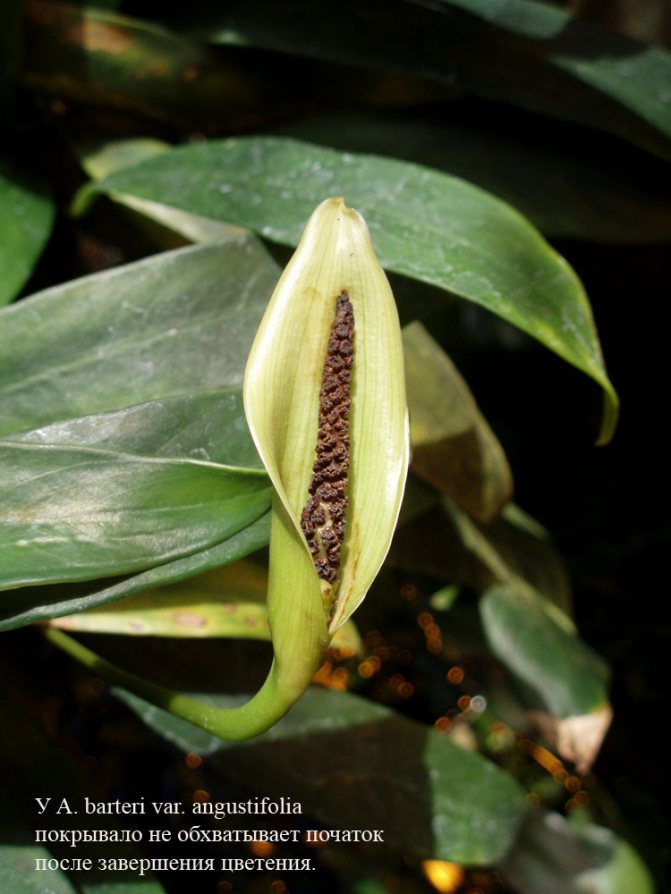

The remaining species can be divided into two groups according to the size of the inflorescences:
1) A. afzelii and A. gigantea (yellow) with an ear length of more than 5 cm;
2) A. gilletii, A. gracilis and A. heterophylla (red) - ear up to 5 cm.
Further identification of the species in the last group should be carried out according to the position of the tek on the synandria. It is rather difficult to distinguish A. afzelii from A. gigantea by the structure of the inflorescence, therefore, in this case, it is necessary to take into account minor features, for example, the shape of the leaves. A. gigantea, unlike A. afzelii, has a three-lobed leaf.
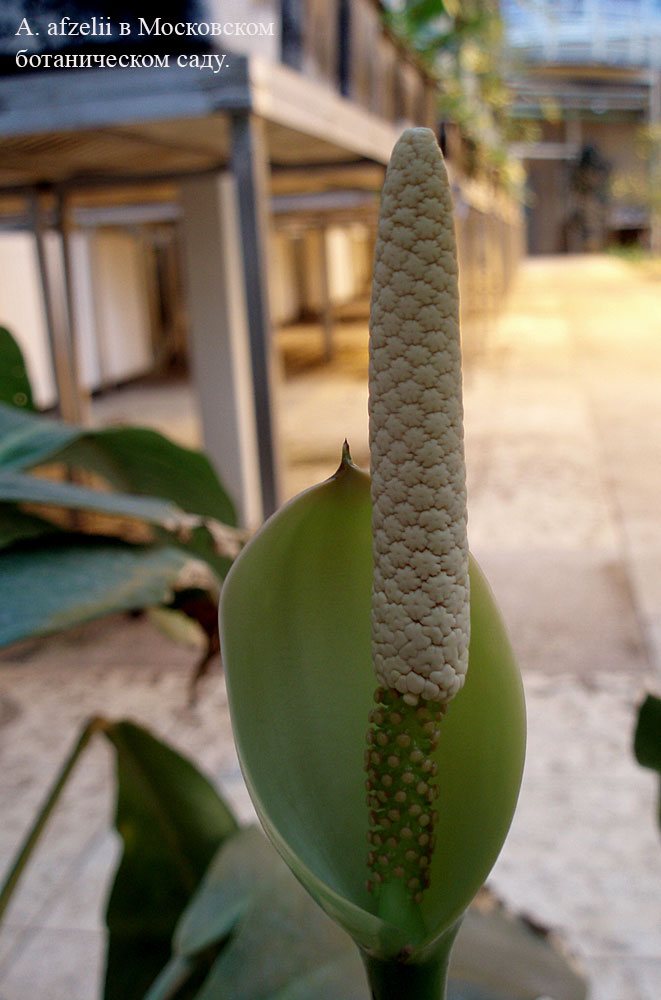

Varieties of Anubias barteri are also distinguished by the shape of the leaf. Thus, using these simple rules, it is possible to establish the species identity of almost any acquired Anubias, and in the case of its hybrid origin, to predict the composition of the parental pair. However, it is worth remembering that such a parameter as the behavior of the bedspread during flowering can significantly depend on the environment in which flowering occurs - in water or in air. In an aquarium, the inflorescence develops very slowly, and the cover in A. barteri may simply not unfold. At the same time, the size of the ear and the position of the leaks practically do not depend on the conditions of keeping.
Having dealt with the stamens and other subtleties of the structure of anubias, we can come to the quite expected question: is it possible to get seeds and significantly increase the number of bushes of these plants in your aquarium?
Anubias lover and breeder from the Perm Territory S. Bodyagin claims that there is nothing particularly difficult in the implementation of this plan (see “Aquarium” No. 4/1994 and No. 4/1998). I can only emphasize the main points that are worth paying attention to. First, you need to remember that you cannot successfully pollinate anubias under water. The development of the inflorescence must necessarily take place in the air. Secondly, you need to have several flowering plants at the same time. The ripening of flowers on the cob of anubias occurs from the bottom up, that is, by the time the pollen leaves the anthers, the female flowers have already faded and lose their ability to perceive it. In this way, nature protected the Anubias from self-pollination. To obtain seeds, it is required to transfer pollen from one inflorescence to the stigmas of the female flowers of another. In case of a mismatch in the development cycles of inflorescences, pollen can be pre-collected and stored in the refrigerator, waiting for new buds to appear.
If at the beginning of my story I mentioned the affairs of bygone days, now I want to talk about the place of plants of the Anubiasa genus in modern science.
Despite the fact that the first Anubias was described more than 150 years ago, the structure of the inflorescences of these plants is still not fully understood. For example, it is not completely clear how pollination occurs in nature. The French botanist M. Knecht, in his 1983 work on the flora of Côte d'Ivoire, casually mentions that the Anubias are pollinated by beetles of the families Nitidulidae and Scarabaeidae. However, it is not entirely clear what attracts these beetles. There are no data on the presence of nectaries in Anubias in the literature; their inflorescences do not have a special aroma. Although it is still worth recognizing that at the time of pollen ripening, a slight floral smell can be felt, but for successful pollination, the presence of beetles is also necessary during the ripening of female flowers, and this happens 1-2 days earlier.
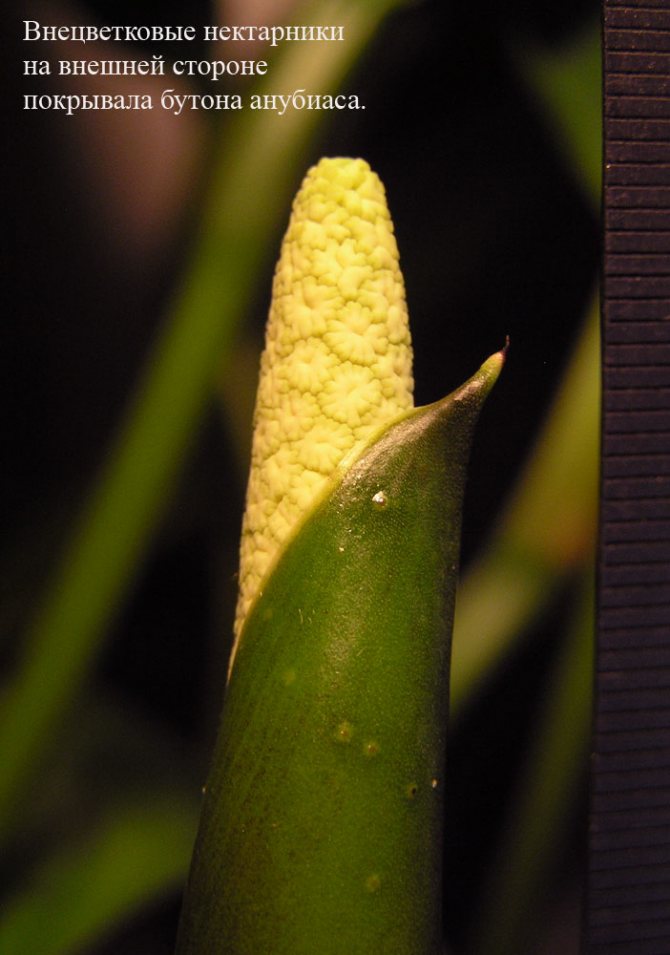

About 10 years ago, in the botanical garden of Montreal, it was established that thermogenesis is inherent in anubias inflorescences. It turned out that in A. afzelii and A. barteri, the temperature of the ear during the flowering period rises twice (with an interval of a day) in comparison with the ambient air temperature. The maximum recorded deviation was 5.6 ° C. It is assumed that it is at this time that the alternate maturation of the female and male parts of the inflorescence occurs.
Heating the cob allows insects to find flowers ready for pollination in the thick of the rainforest. It is possible that pollen and sticky liquid on the stigmas of female flowers serve as food for them. In addition, quite recently the Austrian M. Hesse studied the structure of Anubias pollen, the morphology of which confirmed the data on the possible pollination of these plants by beetles.
Despite the abundance of information, Anubias pose more and more new questions to their lovers.For example, what is the reason for the presence of extra-flowering nectaries in some species or the appearance of strange liquid secretions on the male part of the inflorescence in the final stage of flowering? Many of them have not yet been answered, but this is only for now ...
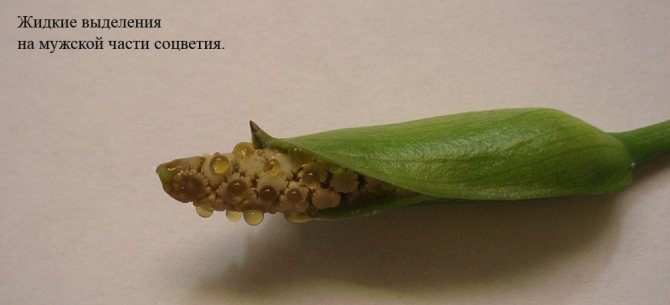

[1] Continuation of this story in the article "On the Point of a Spear" - Approx. ed.
D. Loginov, Magazine "Aquarium" No. 3 for 2010.
Photo credits: D. Loginov, S. Bodyagin, S. Gerasimov and S. Soloviev.
- Green station wagon
- Are Anubias poisonous to shrimp?
- Anubias from seeds: from and to ...
- Sissies
- Anubias. Make no mistake in choosing
Diseases
The health of a plant depends on many factors. These are, first of all, the quality of water, its purity, temperature, hardness and acidity, as well as the quality of the soil in which anubias grows. Most often, aquarists are faced with the following diseases:
- Freezing of rhizome development. For example, in a giant species, in the case of a small thickness of the soil embankment, it does not work well to root. As a result, the trunk does not receive the trace elements it needs.
- Deformation of the sheet plate. This ailment can manifest itself as a result of excessive amounts of light, which damages the leaves.
- Rotting point of growth. If sanitary conditions are not observed, the water is not regularly changed and there is no high-quality filtration, the stem of the plant can become covered with mucus and algae, which provoke the dying process.
- Rust. Just like the previous disease caused by a violation of the purity of the water in the aquarium and the wastes of fish floating in it, rusty spots may begin to appear on the stems and leaves of the plant when anubias is attached to a snag. Over time, these spots transform into through holes, leaving only a network of veins.
- Yellowing of the leaves. This can be caused by overheating of the water in the aquarium in hot weather or insufficient light.
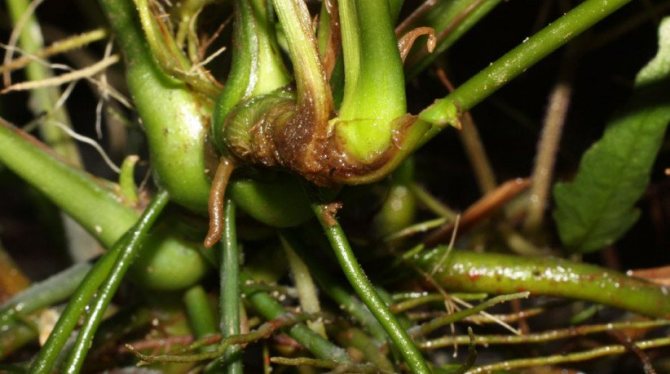

Anubias is an excellent undemanding hydrophyte that can be a wonderful decoration for any aquarium, creating unique aquarium compositions.
Aquarium Plants Aquarium Ground Cover
Anubias lanceolata
This species is often confused by aquarists with A.b.angustifolia
, although they have in common only narrow elongated leaves. The decorativeness of this species in the aquarium is aggravated by the variety of leaf color: on one bush you can see literally all shades of green - from light green to deep dark. The length of its leaves in the aquarium does not exceed 30 cm. The conditions for keeping A. lanceolate do not differ from those for A. Barter, but its reproduction is rather whimsical. If it is enough for A. Barter to break off a piece of rhizome with several roots and 3-4 leaves, and you have a new plant ready for planting in your hands, then you will have to tinker with lanceolate. A piece of rhizome (cutting) separated from the mother plant is suspended in the aquarium above the water itself, so that there are only a few millimeters from the cutting to the surface of the water, and in this form is left until 1-2 new leaves and roots appear. Only after this can the young plant be planted in the ground, but it is better not immediately in the aquarium, but first in the greenhouse, in a semi-submerged form. And only after 3-4 leaves appear, the new Anubias can be planted in a permanent place in the aquarium. Regular rest "in the paludarium is not necessary for this species, but if it begins to turn yellow and becomes covered with algae, it is better to send it to a" sanatorium "for a while," breathe the air ". However, if the water in your aquarium is well filtered and is regularly changed by 20% per week, then this usually does not arise.
Anubias congolese and Anubias heterophylla (Anubias congensis & Anubias heterophylla)
Anubias variegated Anubias variegated Anubias wavy
It is not by chance that I describe these two types in one chapter.Let's leave the botanists to argue about whether these are different species or the same - from the point of view of aquarium content, there is no difference at all between them, with the exception of the shape of the leaves. In the same group, you can safely add another dubious species or subspecies - wavy Anubias (A.sp. “undulata”), which also does not differ from them in anything, except for whimsically decorative corrugated leaves with a wavy edge.
These are rather large plants with a thick, fleshy rhizome, much more suitable for growing in a greenhouse or paludarium, in a semi-submerged state. Its leaves can be up to 40 cm long and only look good in large, spacious aquariums. Congolese Anubias love warm (24-28 °) and softer than other types of water, and are very demanding on its purity and regular replacement. However, in almost any conditions for 6-7 months of aquarium keeping, these Anubias “get tired”, become covered with algae, begin to shrink, and almost stop growing. Such a plant, “tired” by underwater conditions, should be placed to rest in a greenhouse with 100% air humidity, flooding only the lower half of the leaf stalks with water. In such a "sanatorium" in 2-3 months Anubias will be cleansed of fouling, get stronger, and soon will be ready to decorate the underwater landscape again.
Features of the
Many have heard that Anubias will need a special type of substrate for their substrate, and they are very picky about their habitat. It is a myth. In fact, Anubias are fairly undemanding plants. They will grow in both sterile soil and old, almost anaerobic soil.
There are prerequisites for keeping the plant alive inside the aquarium.
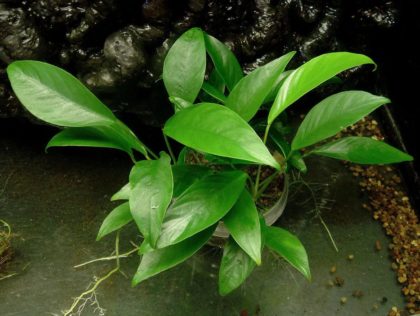

- Not only can they survive in the shade, they even prefer shady conditions. In strong light (about 1 watt per liter or more) develop with oddly shaped misshapen leaves.
- In water that is too rich in organic matter, the plant will develop holes in the leaves, so you have to take care of the condition of the aquarium. This happens when you siphon the bottom irregularly, overfeed the fish, or the filter is dirty, or forgot to change the water for a long time.
- A healthy plant can suddenly rot and drop branches. This usually happens when the quality of the habitat has rapidly changed for the worse. For example, this happens if the temperature rises sharply for a short period of time. The rotting process occurs when the temperature reaches 40 degrees Celsius in the environment.
Stress tolerance
Anubias aquarium boasts good stress resistance. Endurance and mechanical resistance allows the bush to tolerate long-term transportation well. The attitude towards injuries is also very good. With the loss of several leaves, this does not affect the well-being of the plant in any way, except for the appearance itself. But don't be upset about this. After all, Nana will let out new leaves. In most cases, the bushes can even tolerate a fracture of the root system.
The transplant is normal. As a result of the tendency to slow growth, it can take a long time for new leaves to appear. It sometimes seems that nana is in a dormant state. Often this phenomenon is confused with a period of adaptation, and inexperienced amateurs begin to feed the plant.
How to propagate anubias by rhizome
Under natural conditions, this plant reproduces vegetatively and by seeds. Vegetative reproduction occurs during the period of tropical rainfall. At this time, the water comes out of the banks of the reservoir and the plants are in the water. Seed propagation is usually observed when the water level in a body of water drops and plants grow in soil that is half-covered with water. In an aquarium, the plant grows slowly.
In greenhouse swamp conditions or in a low-water aquarium, a well-developed plant can bloom.Flowers are small, inconspicuous, they are collected on the cob; in the lower part of the inflorescence there are usually female flowers, and in the upper part, male; the inflorescence is surrounded by a pale green funnel-shaped blanket.
Male flowers ripen 2-3 days later than female flowers, therefore, to obtain seeds, artificial pollination should be carried out using a squirrel brush. Sowing seeds and growing seedlings are carried out in a glass dish. A mixture of clay and peat is used as a soil, and washed river sand is poured on top.
The seeds of these plants, due to the difficulty of storage, have a very low germination capacity. Seed propagation in an artificial environment is possible only when the plants are kept in a moist, warm greenhouse in marsh conditions.
Reliable breeding methods for Anubias - This is the division of the rhizome and separation from the rhizome of daughter plants. However, it is difficult to obtain a large number of young plants in this way, since they grow very slowly, especially when completely submerged in water.
In addition, all plant species belonging to this genus are very sensitive to rhizome injury: they sharply slow down growth, and new leaves noticeably decrease in size.
In some cases, it is possible to breed anubias from part of the rhizome. Separate a piece of rhizome in this way. The rhizome is removed from the soil and part of it is cut off (1/3 remains with the parent plant). The resulting stalk is divided into parts, each of which must have buds. Root cuttings for growing anubias are placed in an aquarium. After they have roots and the first leaves, they are slightly dripped in, and then planted in the ground.
Below you will find out how you can grow anubias in your home aquarium.
Related Videos
Watch the video about Anubias Nana:
Anubias nana, with its compact size, can be an interesting decoration for any aquarium. Her modest requirements can easily be satisfied not only by an experienced aquarist, but also by a beginner. The dwarf anubias will bring special joy to people who are keen on aqua design, but do not have enough time and money for their favorite creativity.
- Similar posts
- Top 14 popular types of Anubias
- Wonderful tropical plant: Bartera's Anubias
Anubias hastifolia
Anubias spear Anubias gilletti
At one time, one of the best aquarists in the country, Vyacheslav Yudakov, advised to determine whether this or that type of anubias is suitable or not suitable for underwater keeping: “If the back side of the leaf ends in pointed“ ears ”similar to the feathering of an arrow, then such anubias is almost certainly suitable only for keeping in a greenhouse or paludarium. " But there are no rules without exceptions. Although the leaf of A. Hastifolia has an arrow-shaped shape, it can still be kept underwater for some time (up to six months), but after that it definitely needs a rest in a greenhouse. Hastifolia is one of the largest aquarium species of Anubias. Its leaves can reach a length of 40 centimeters or even more.
If in the paludarium A. spear-shaped is rather unpretentious, then when kept underwater it is one of the most capricious species. He does not tolerate even weakly acidic water, so he absolutely needs good filtration and weekly replacement of 25-30% of the volume of the aquarium. A slight lack of light in this plant causes a stop in growth and yellowing of the leaf plates, and a slight excess immediately provokes algal fouling. In order to maintain the lance-shaped anubias, you need to have a sufficiently long experience in working with semi-aquatic plant species. All the same applies to A. Gilletti, who is very close to him (Anubias gilletti
).
Habitat
The first samples by scientists were found in the tropics of Africa in the western part of the continent.
- Most often, Anubias can be found naturally in shady swampy lands.Their favorite place of growth is on the banks of tropical rivers with low lighting. Being emerging plants, they are also found in coastal areas, where they receive the necessary amount of moisture during the rainy season. Sometimes they come across on various stones and snags, which are located right in the water column.
- There is a significant representation of Anubias in Cameroon, most often it can be found near the famous Victoria Falls. It is dominated by very soft water, which does not contain molecules of magnesium and calcium, as well as a variety of nitrates and nitrites. Such places are ideal for the development of plants similar to Anubias.
- This representative of the underwater world can also be found in running water. In such places, it forms a continuous carpet that adorns the driftwood and stones located at the bottom. Many owners have adapted to grow them at home. Often in aquariums you can find not only this exotic representative of the flora, but also such an aquatic plant as Bolbitis heudelotii.

